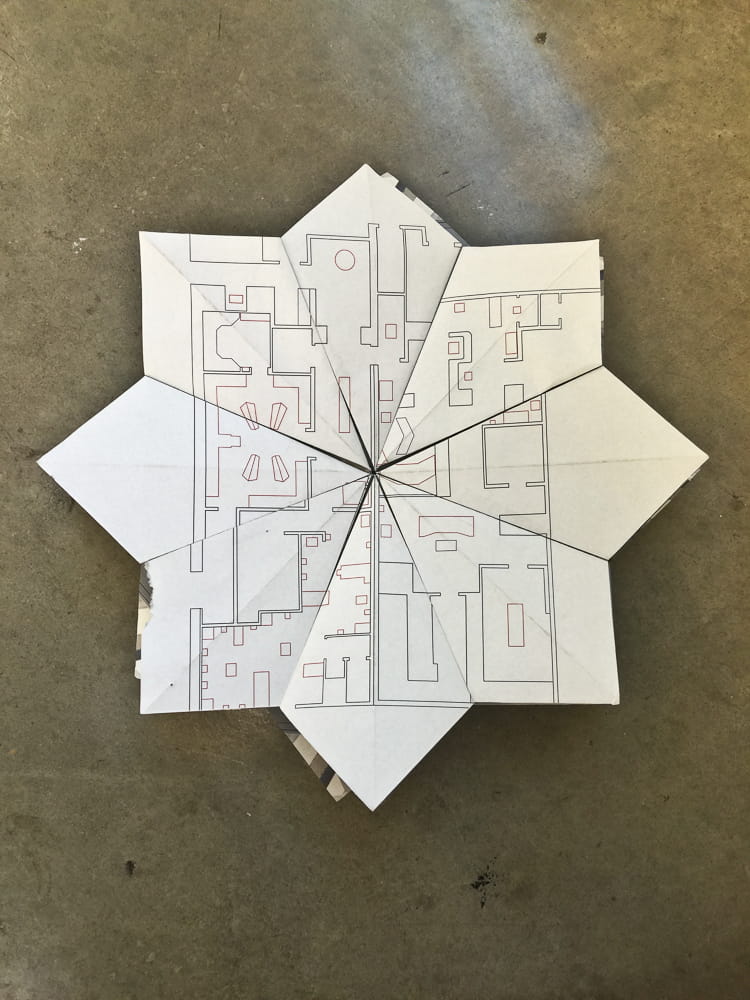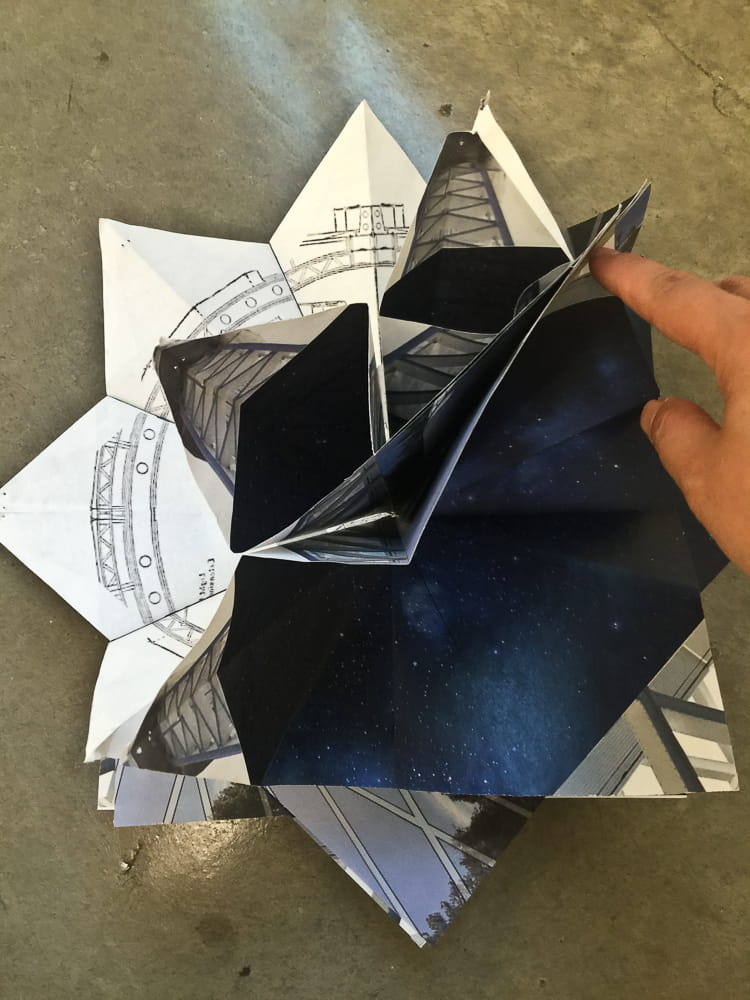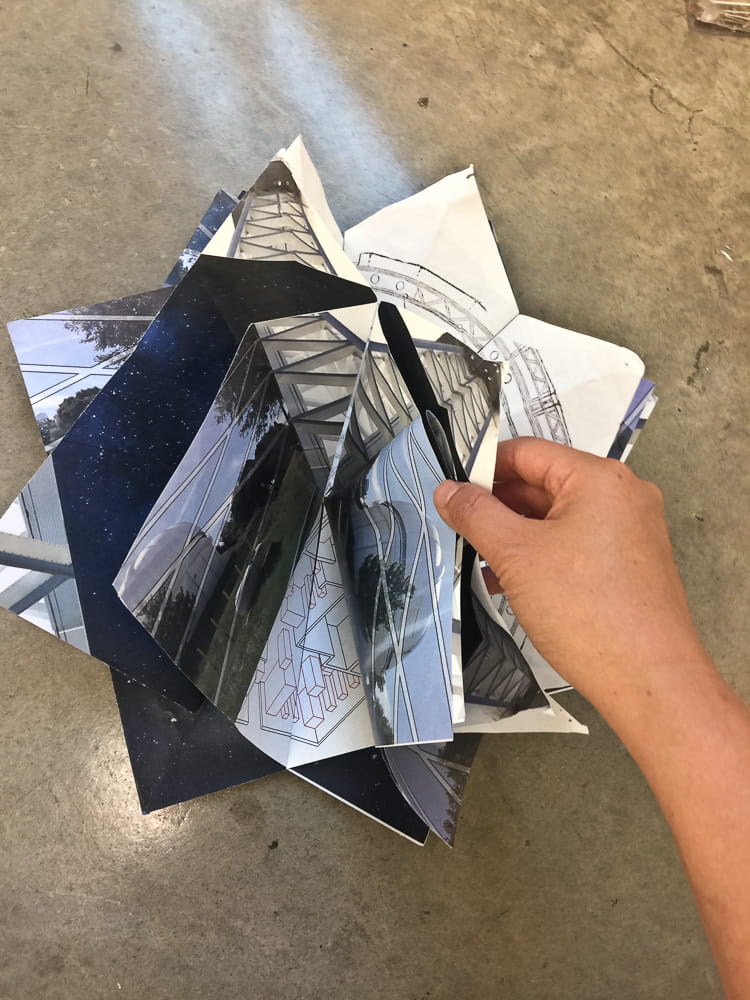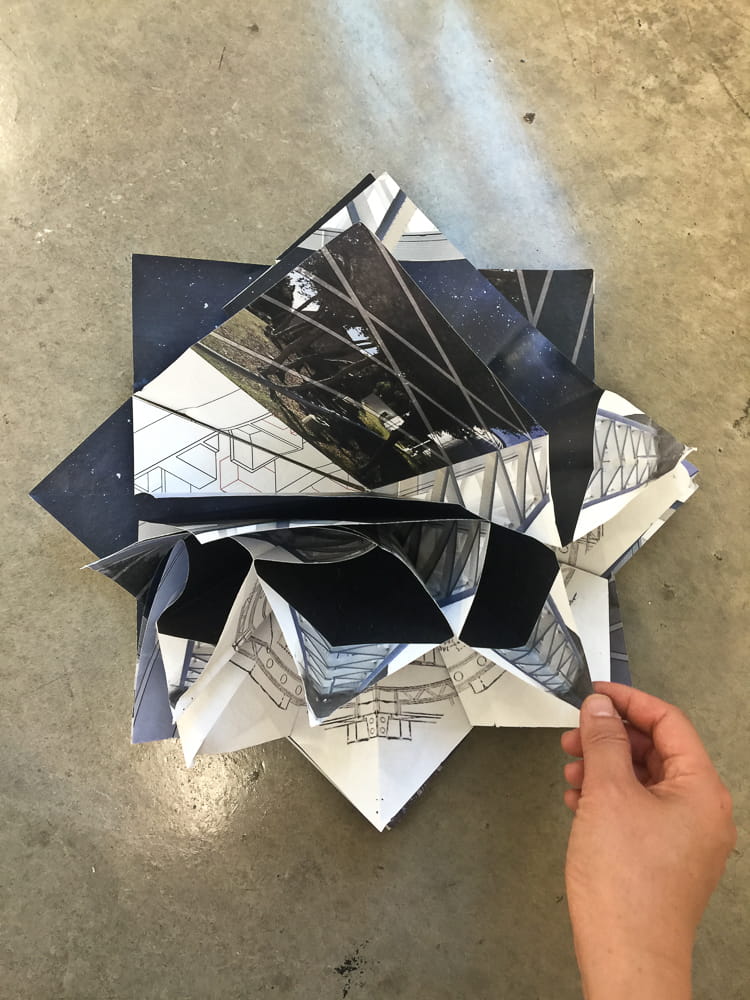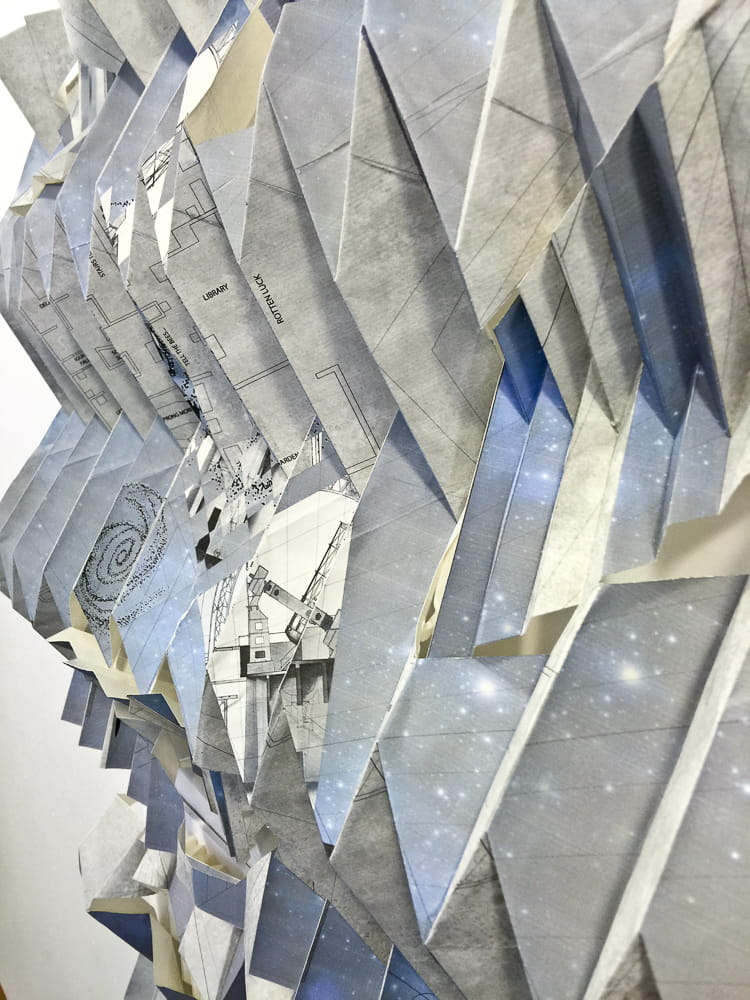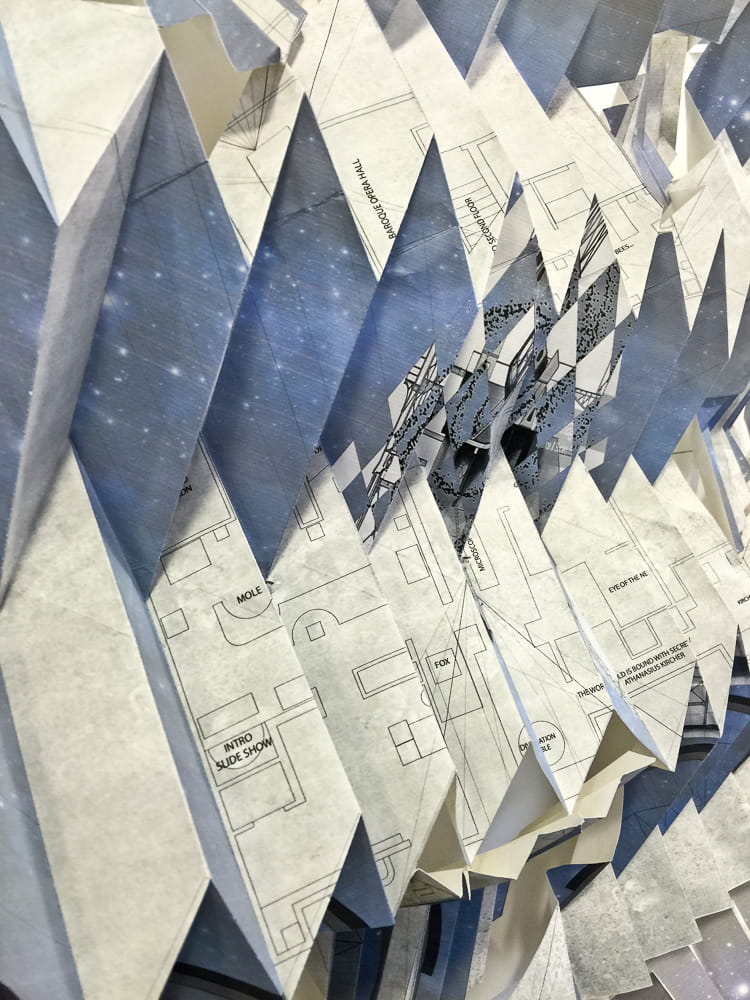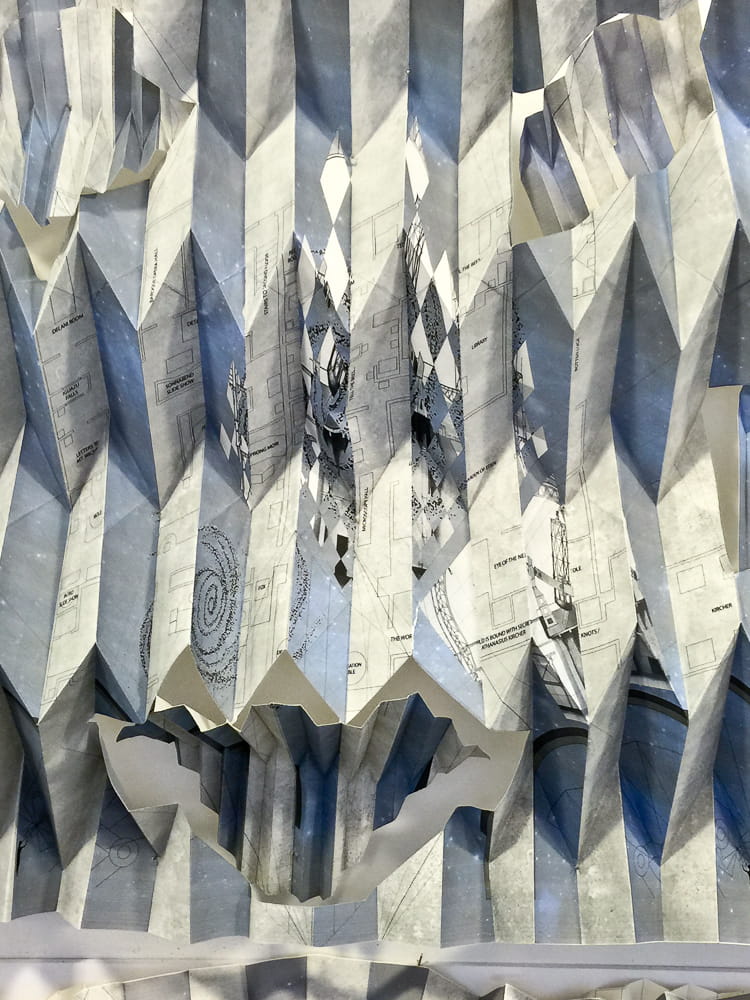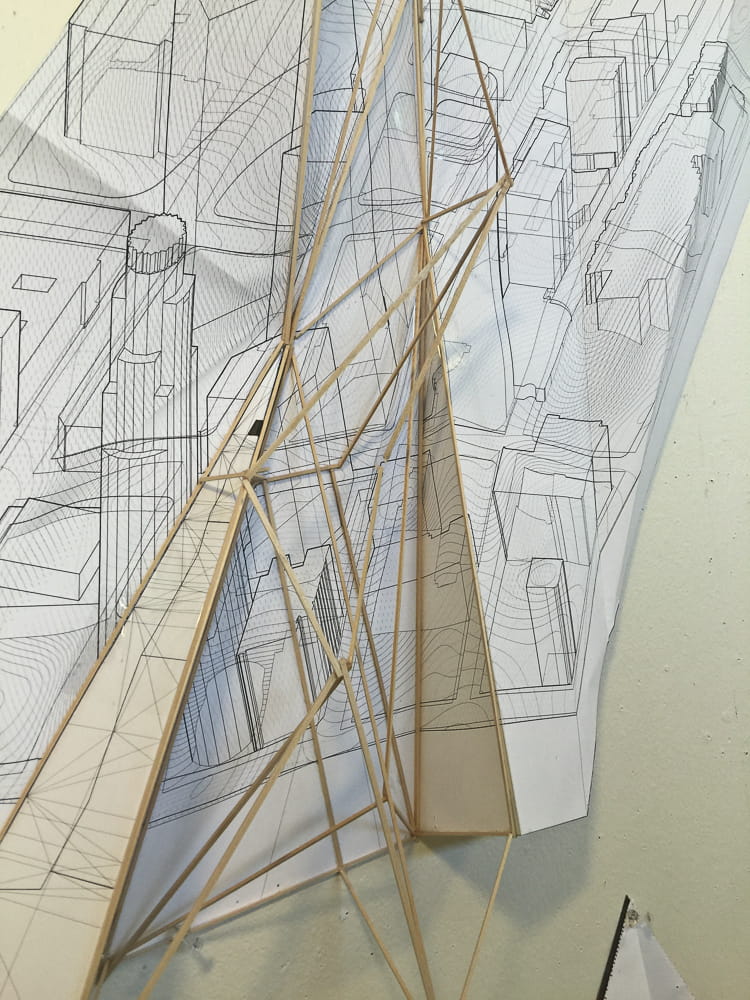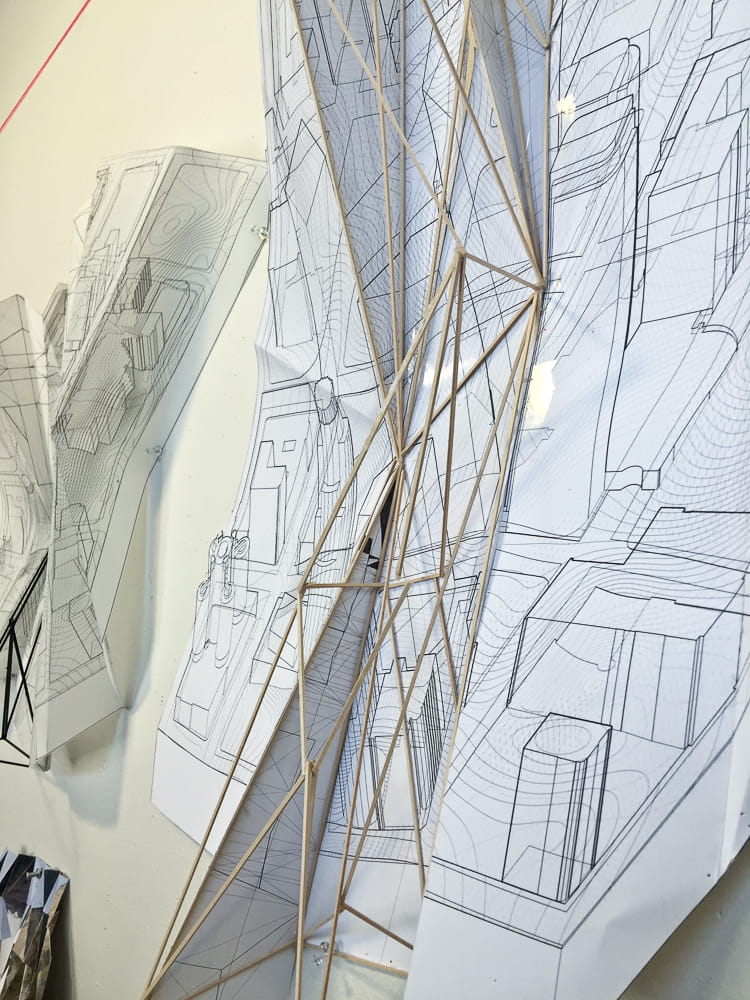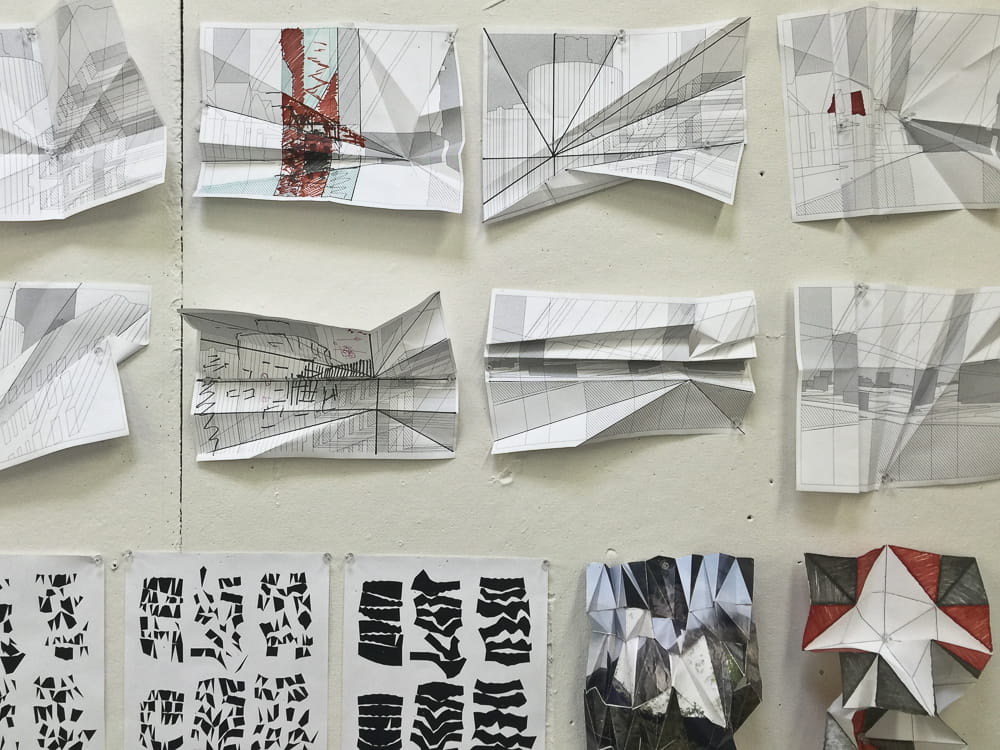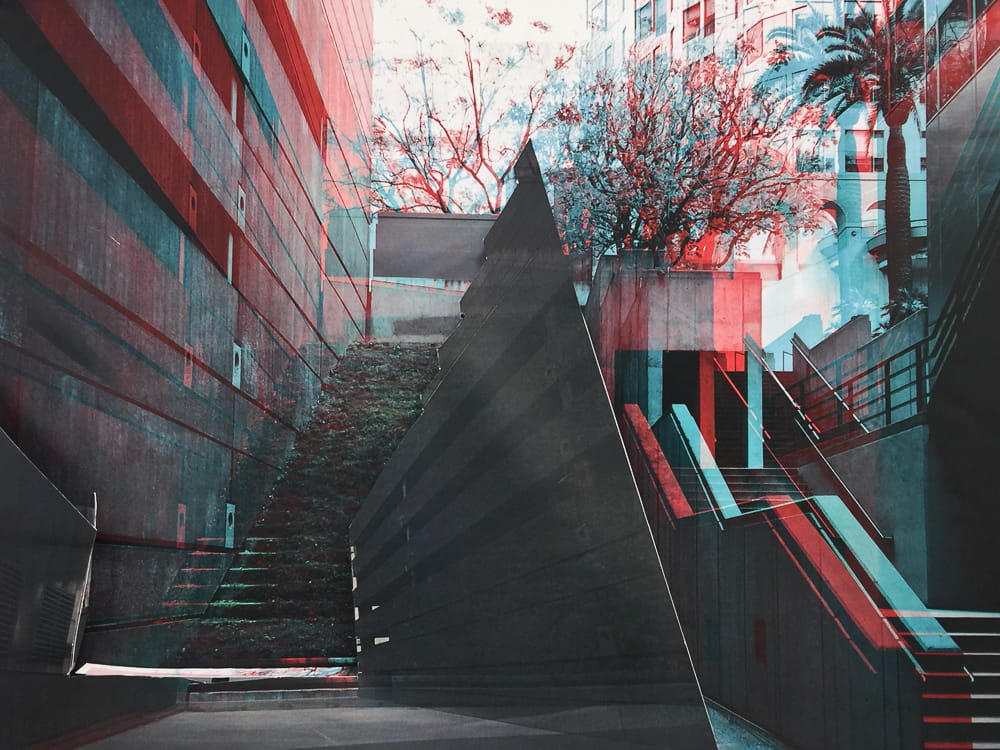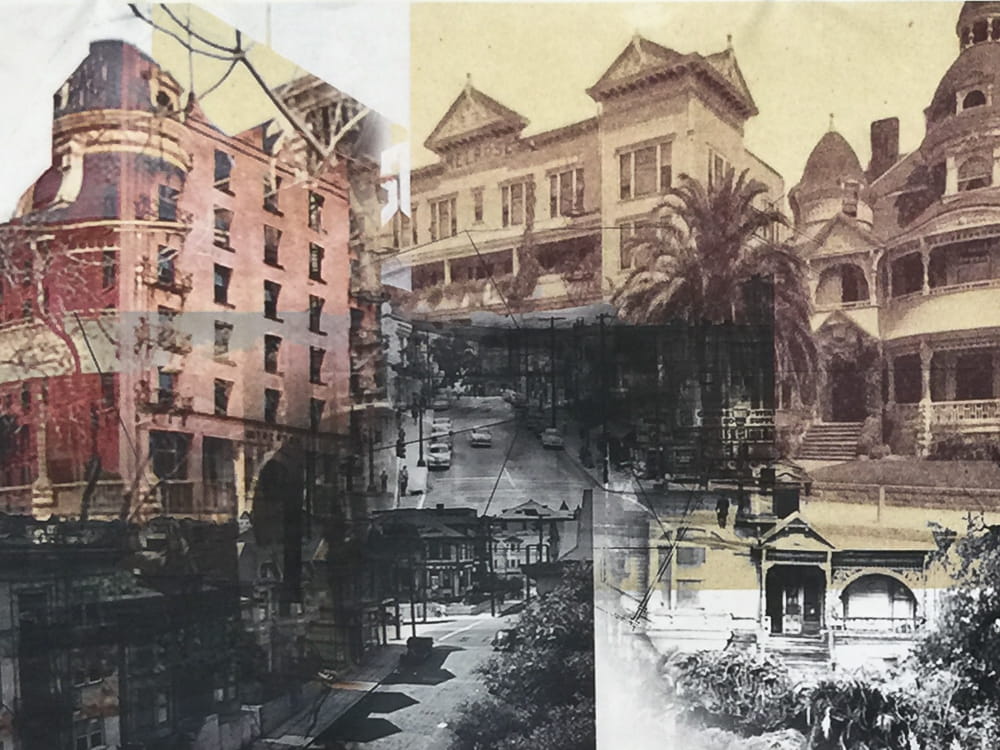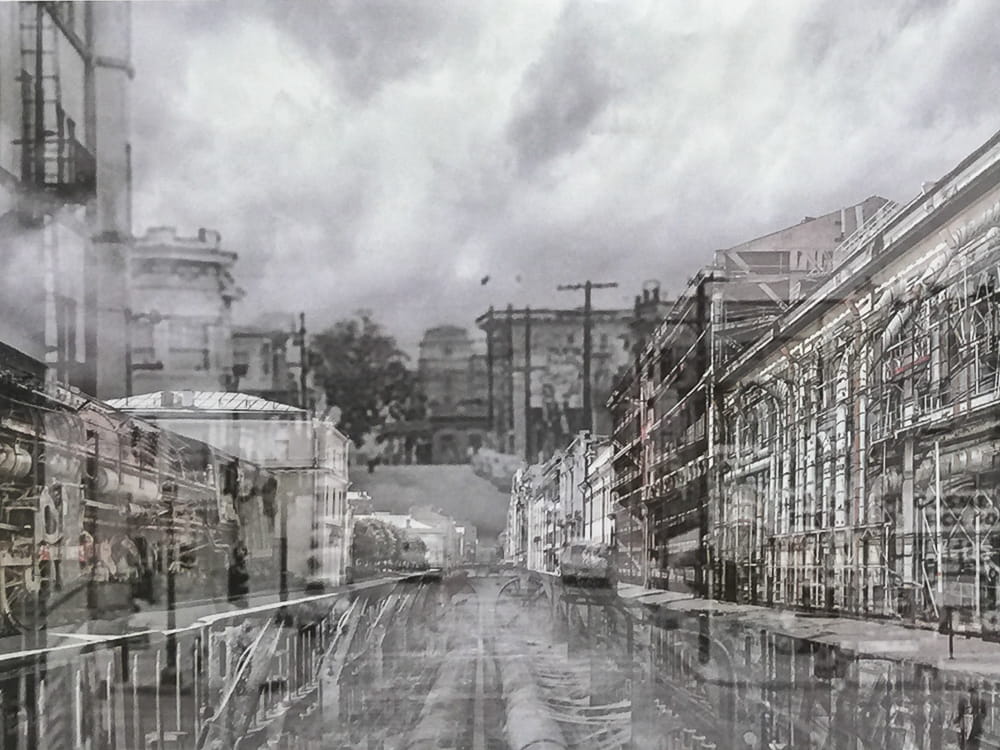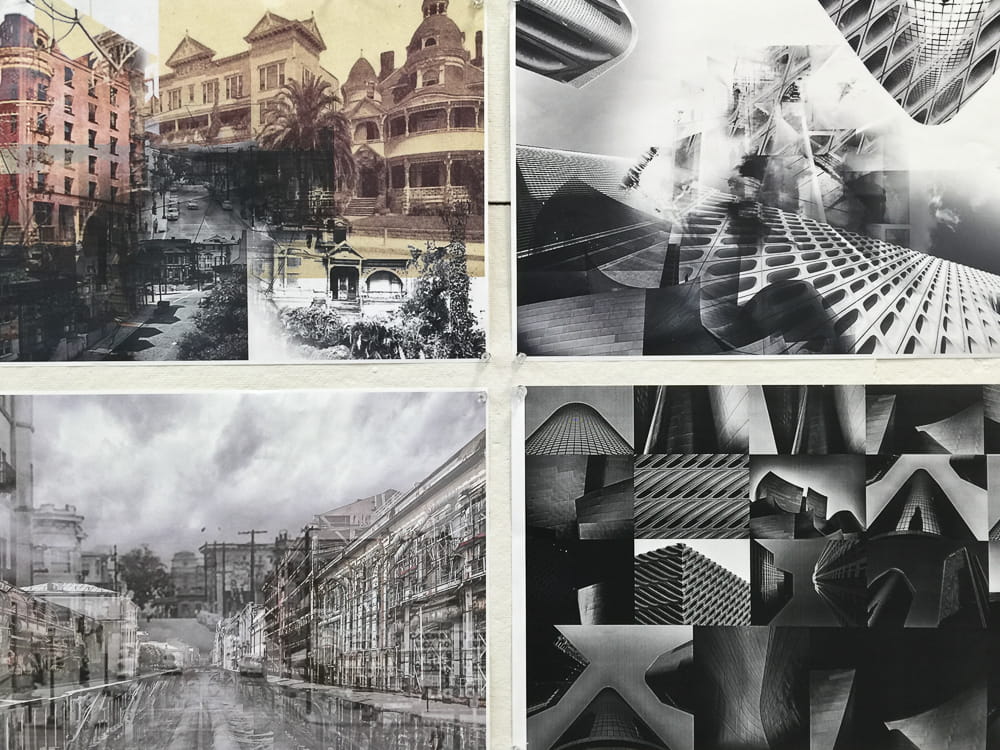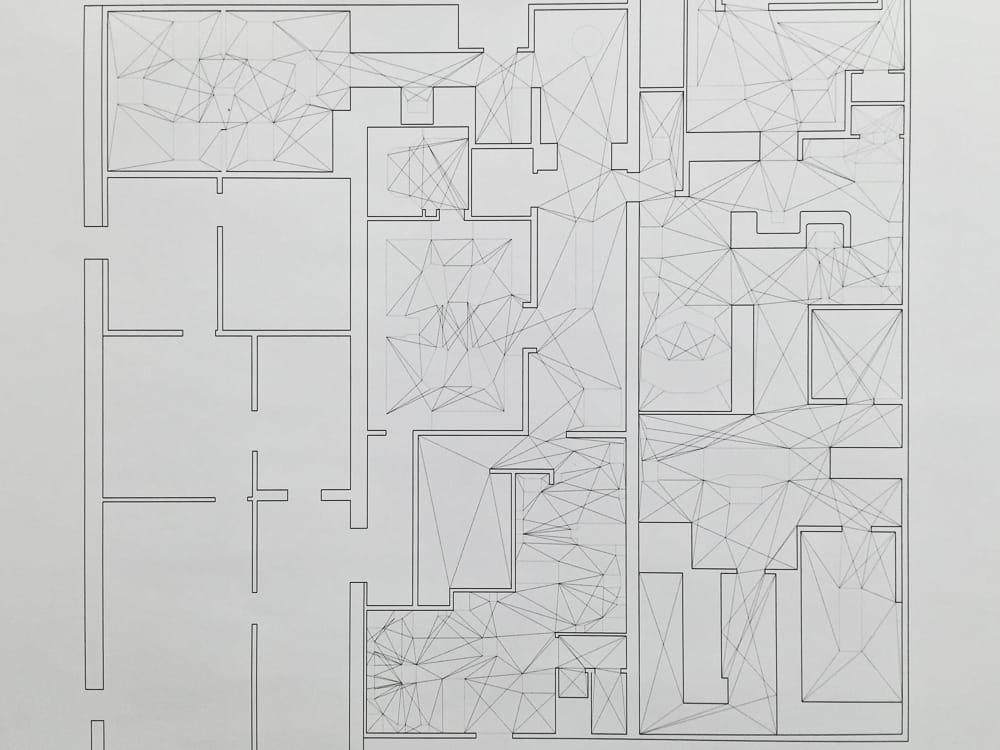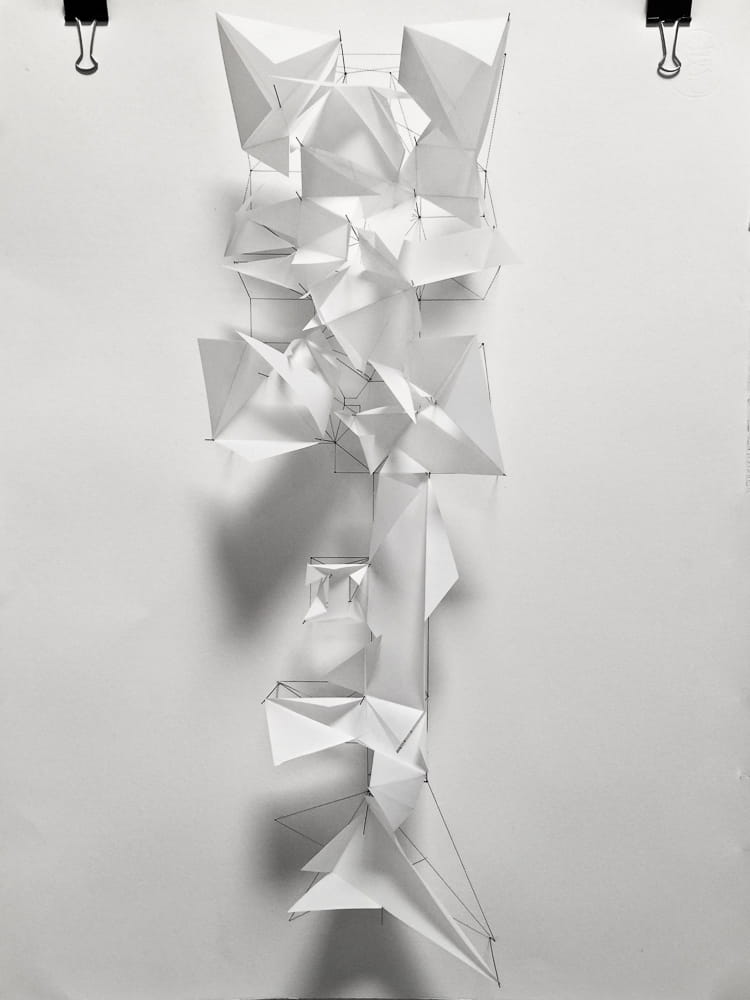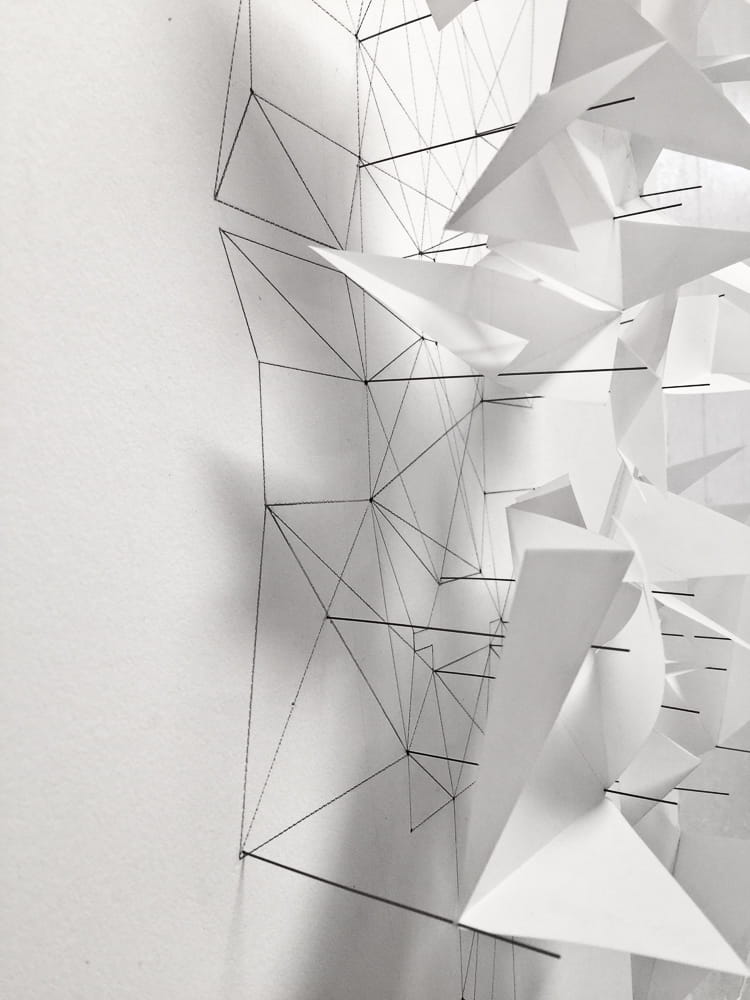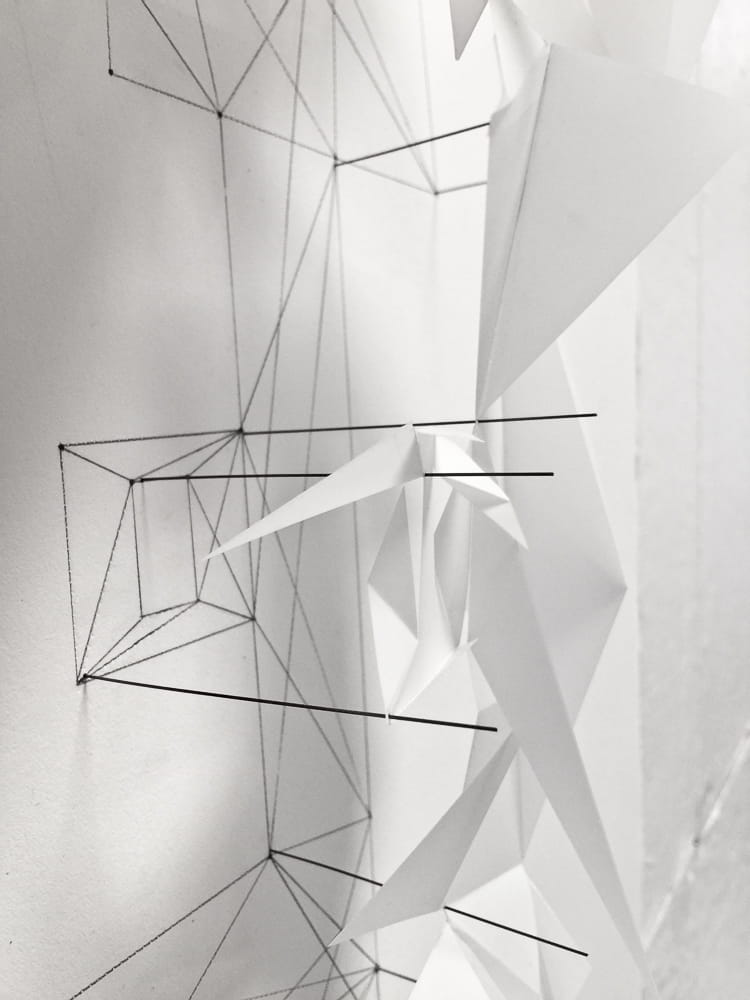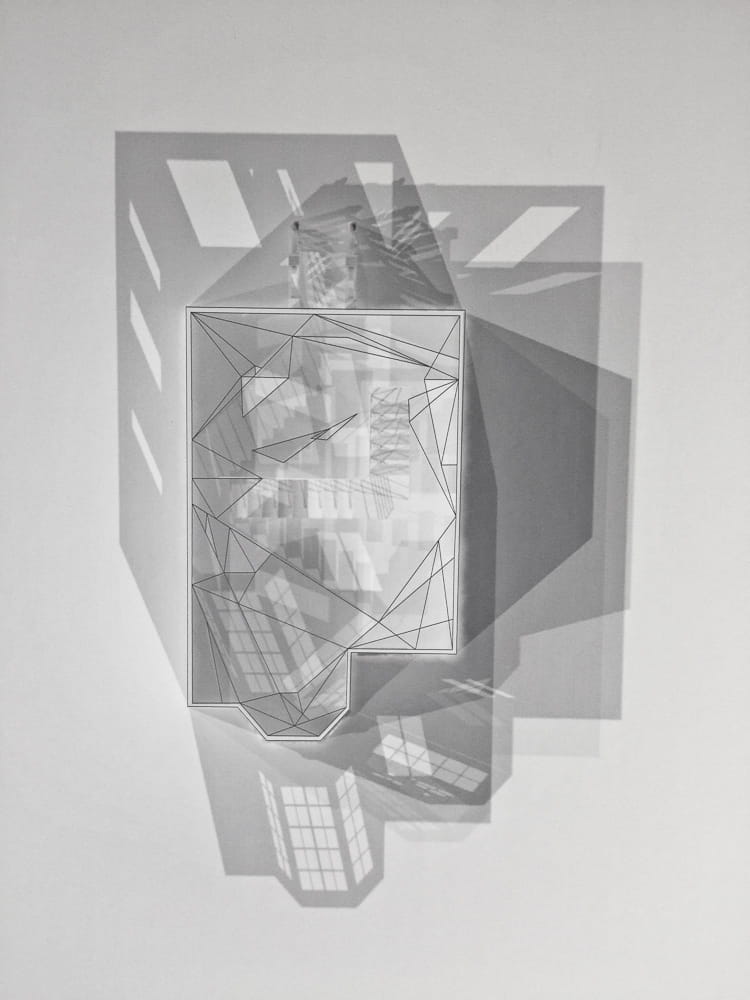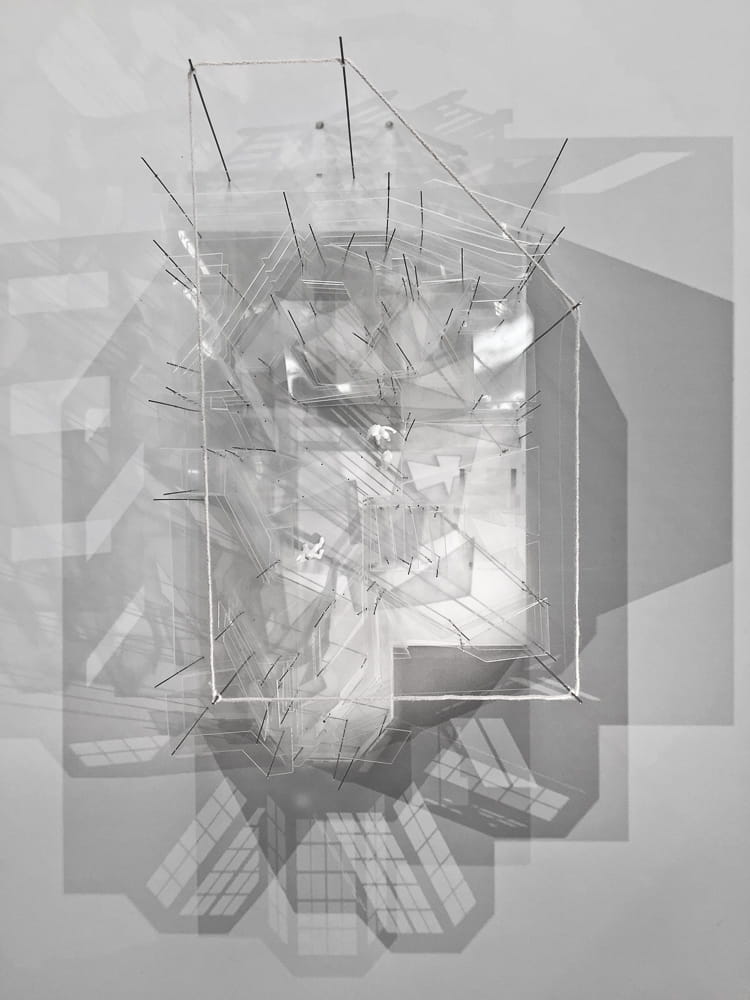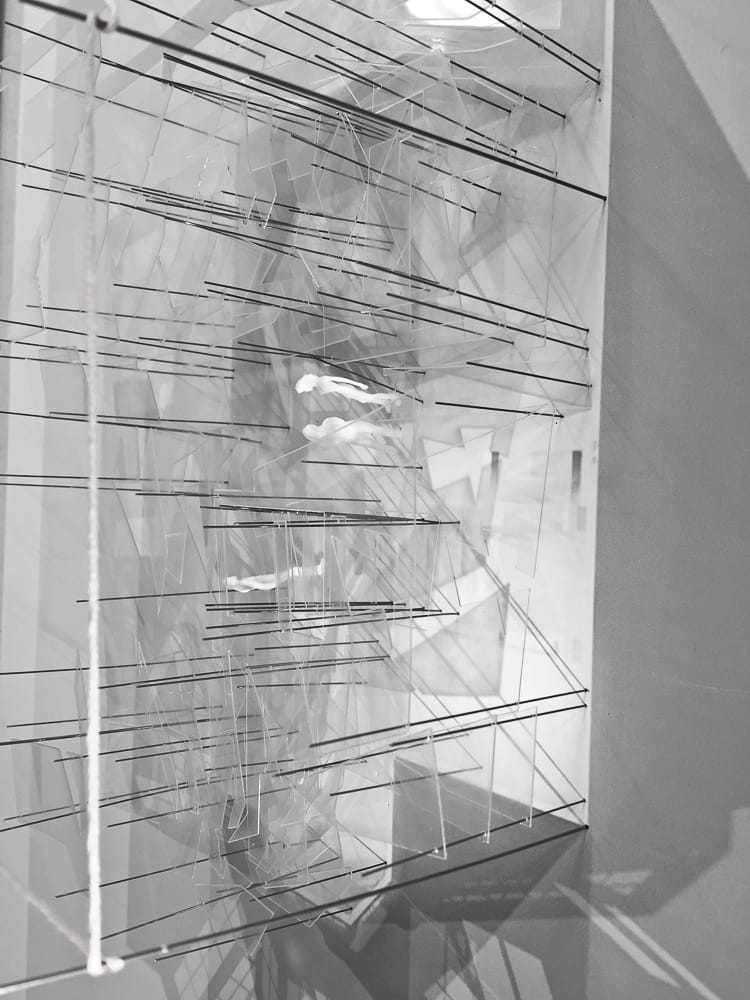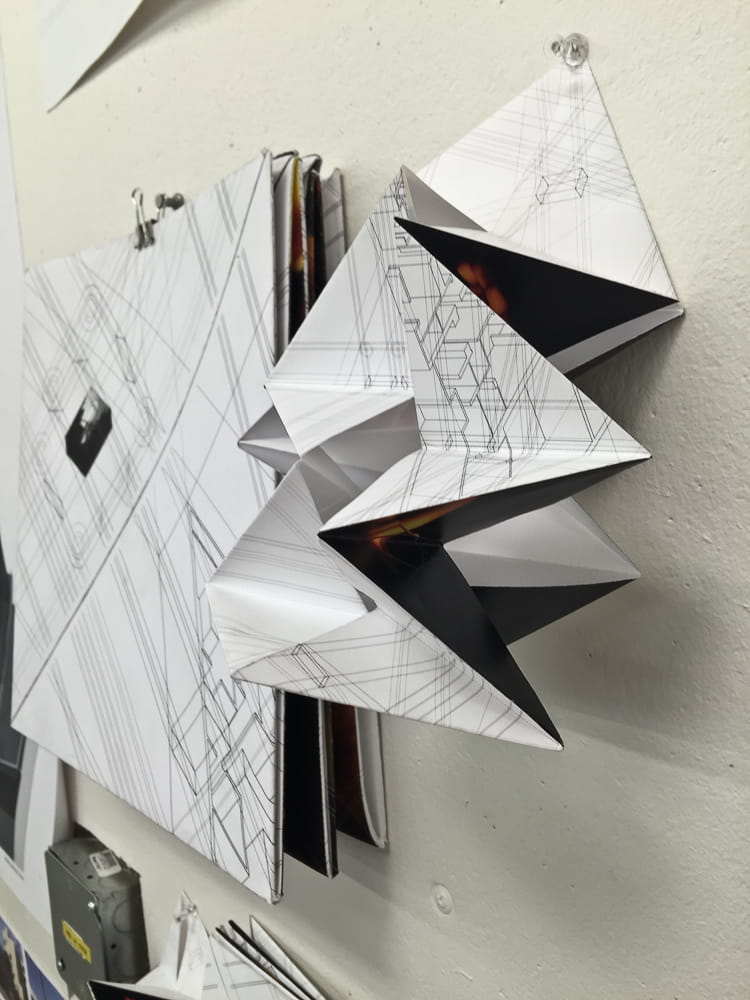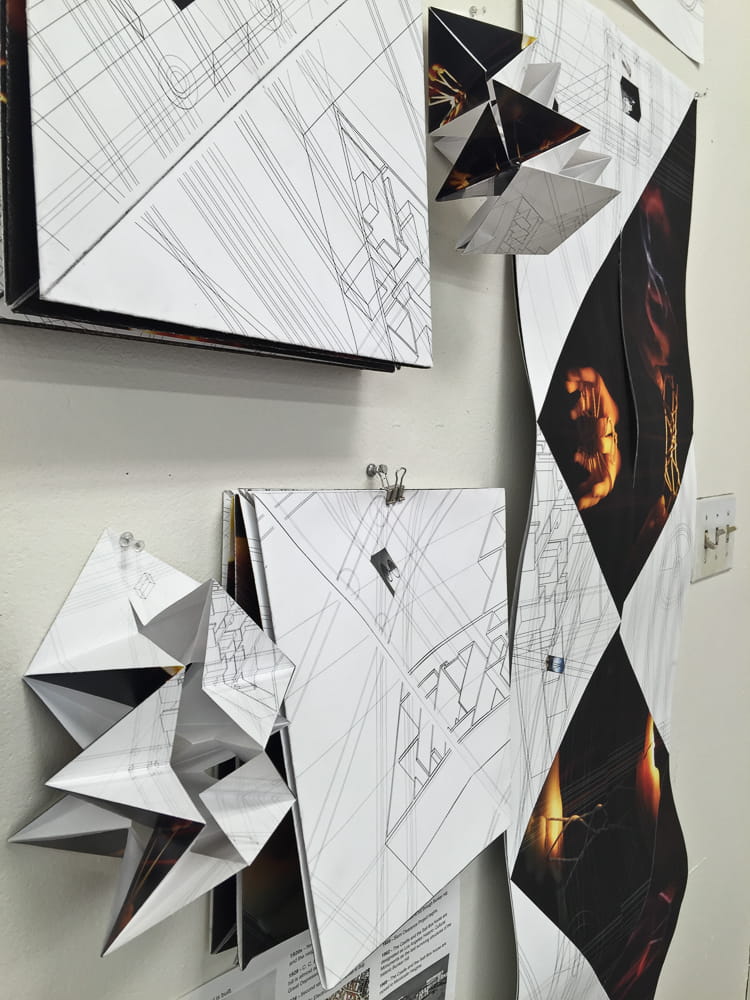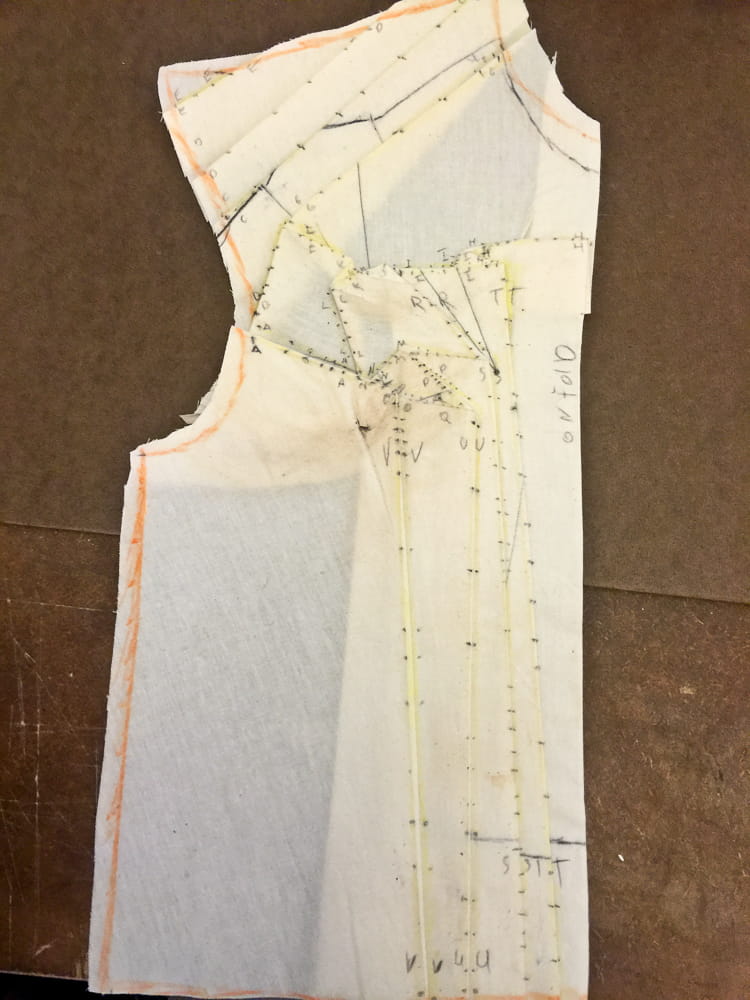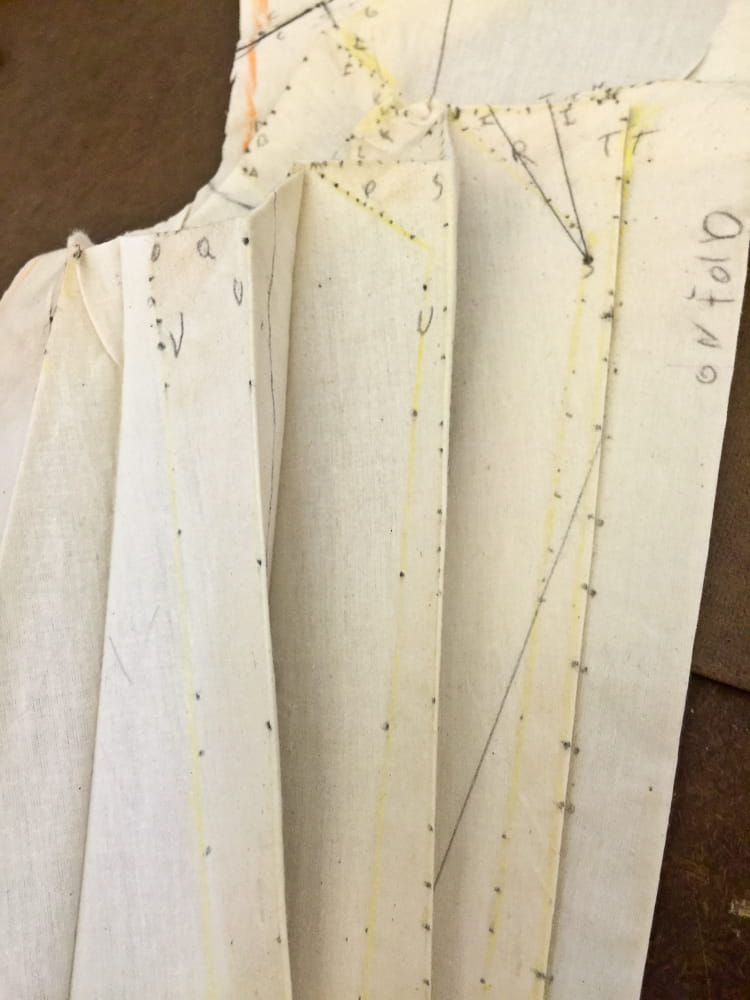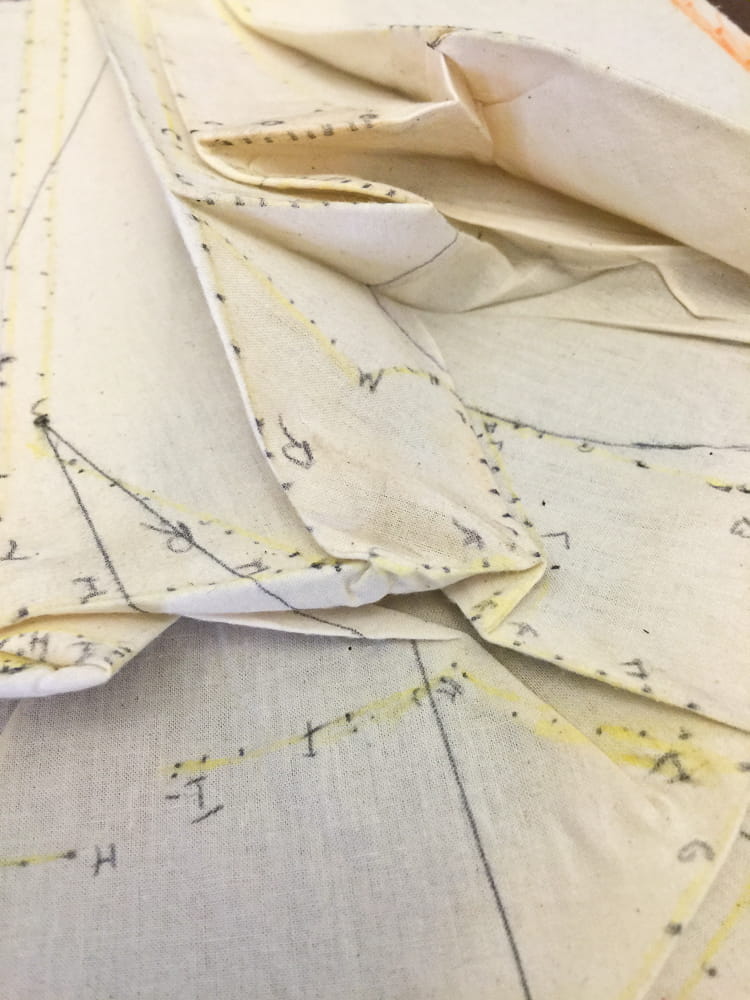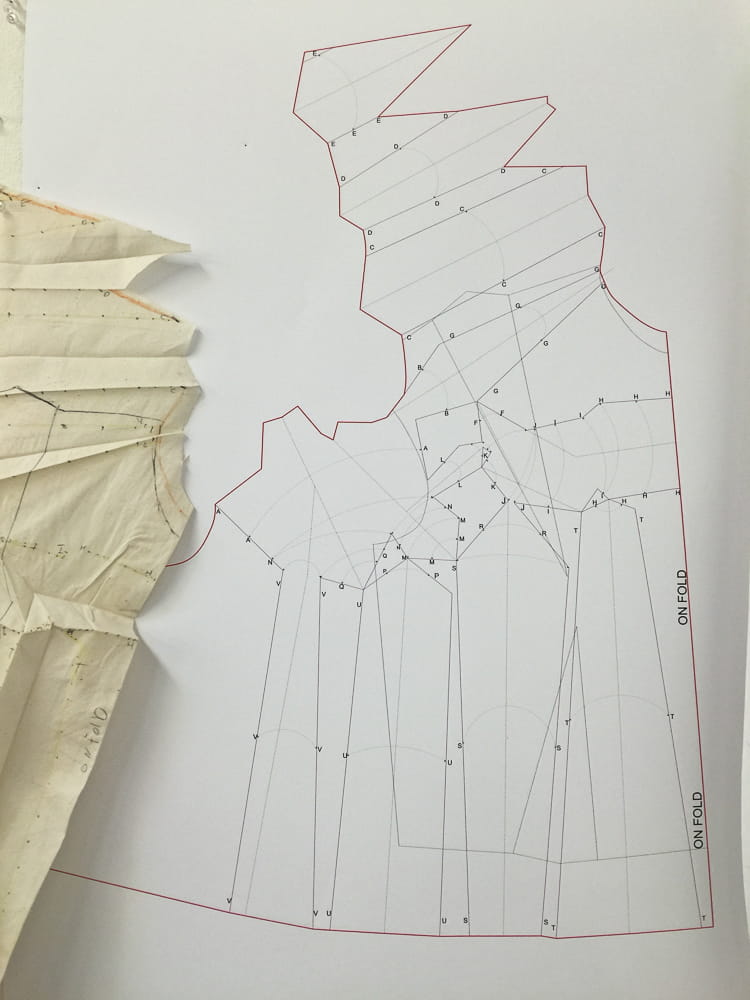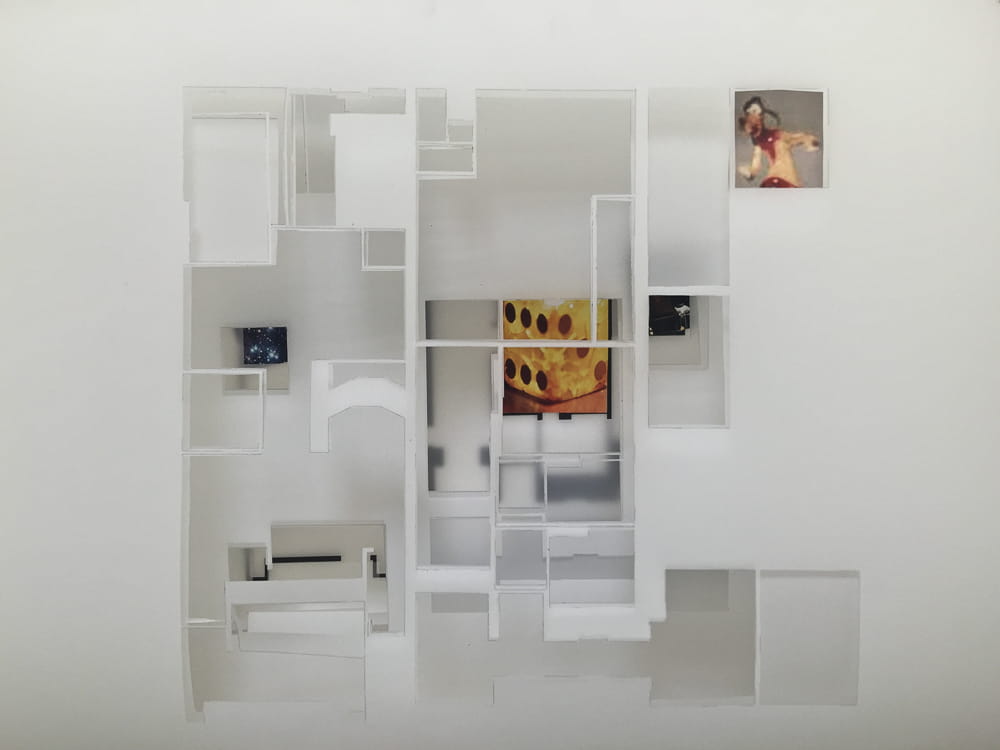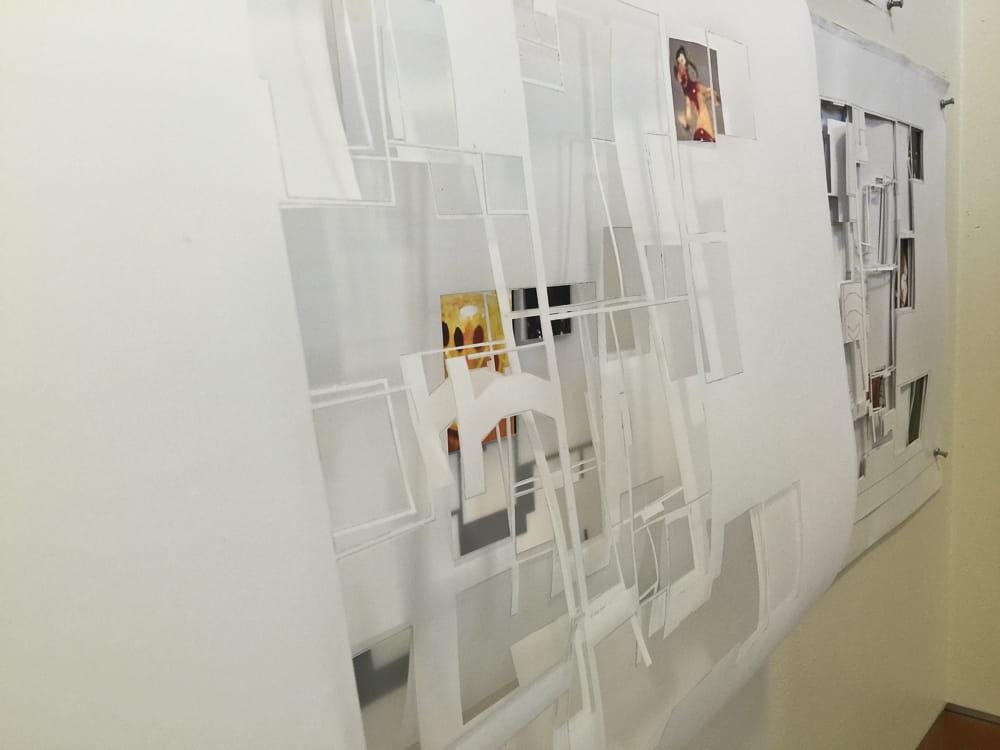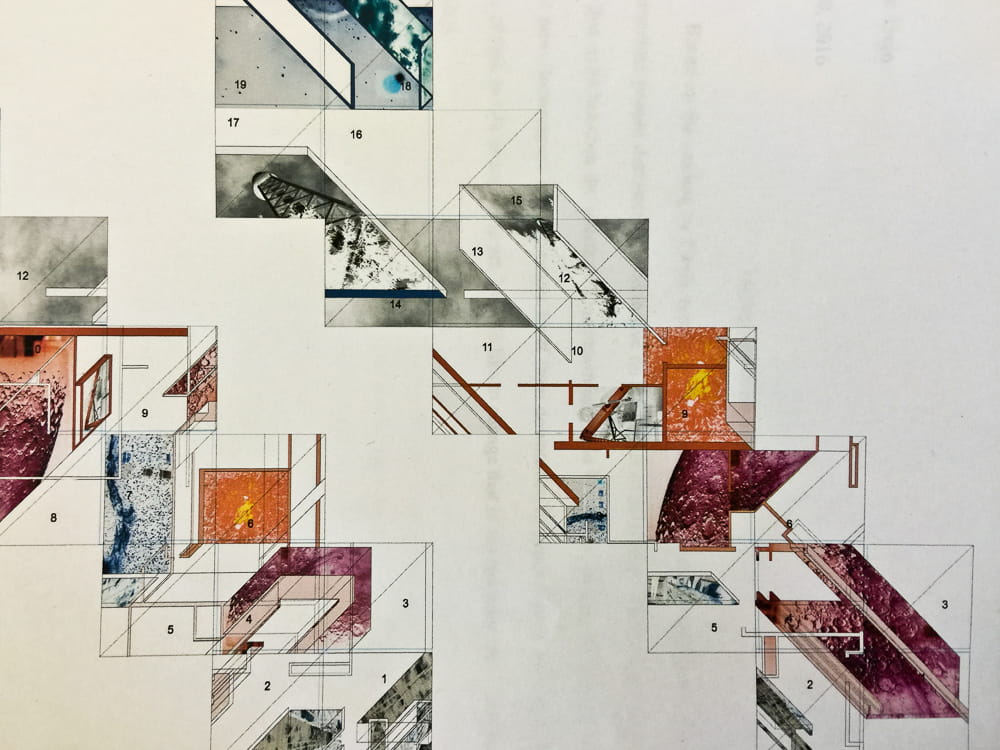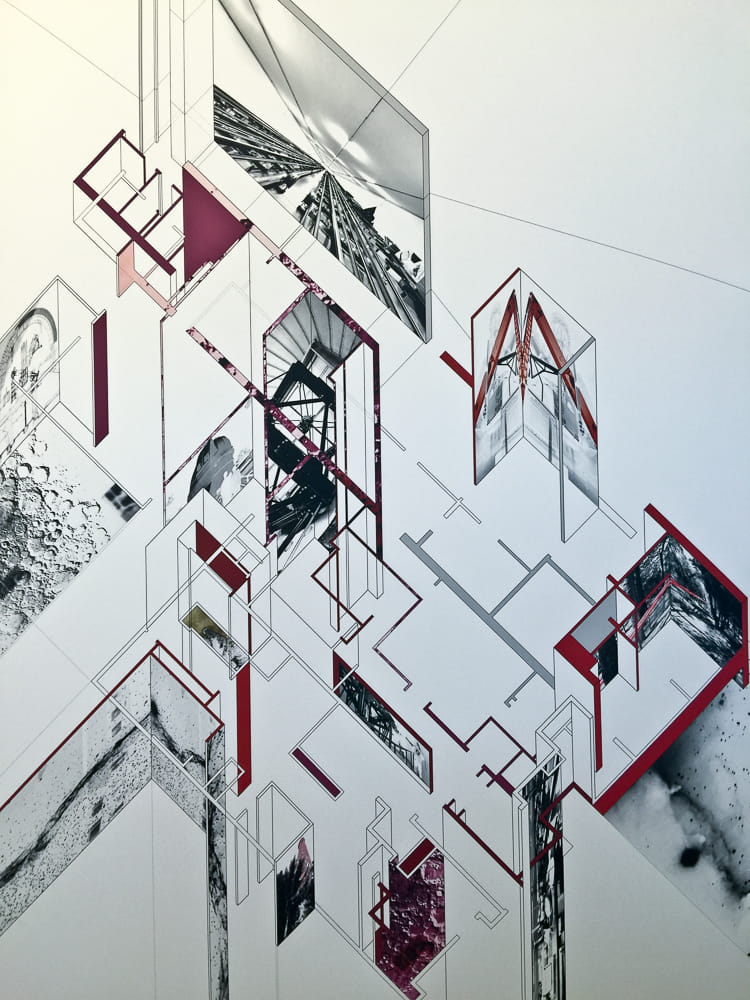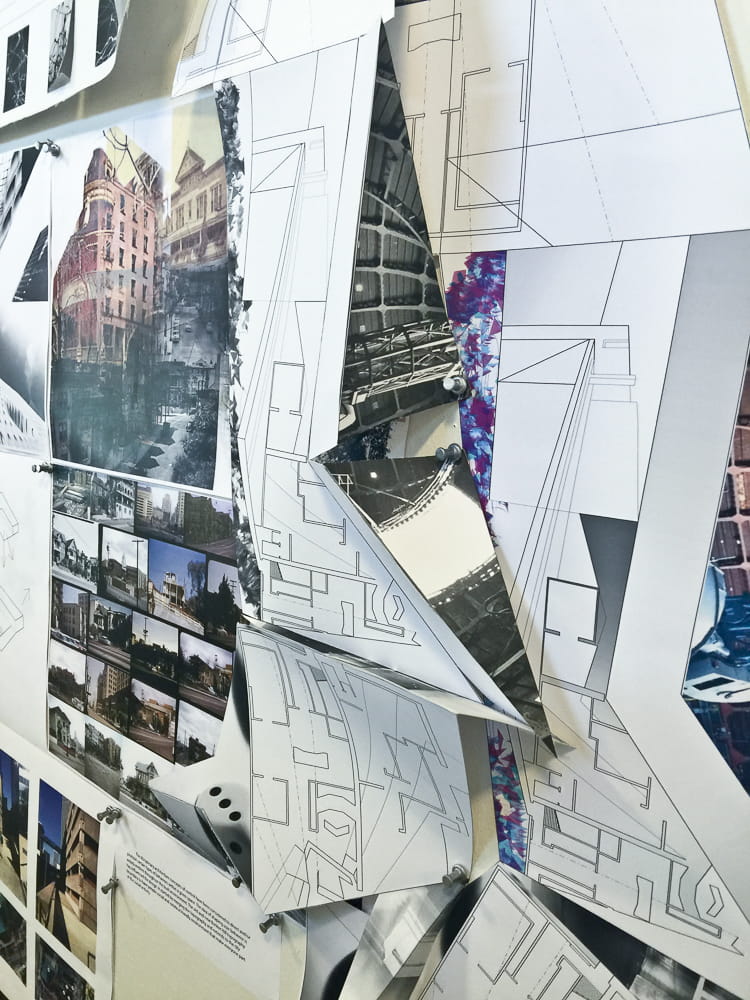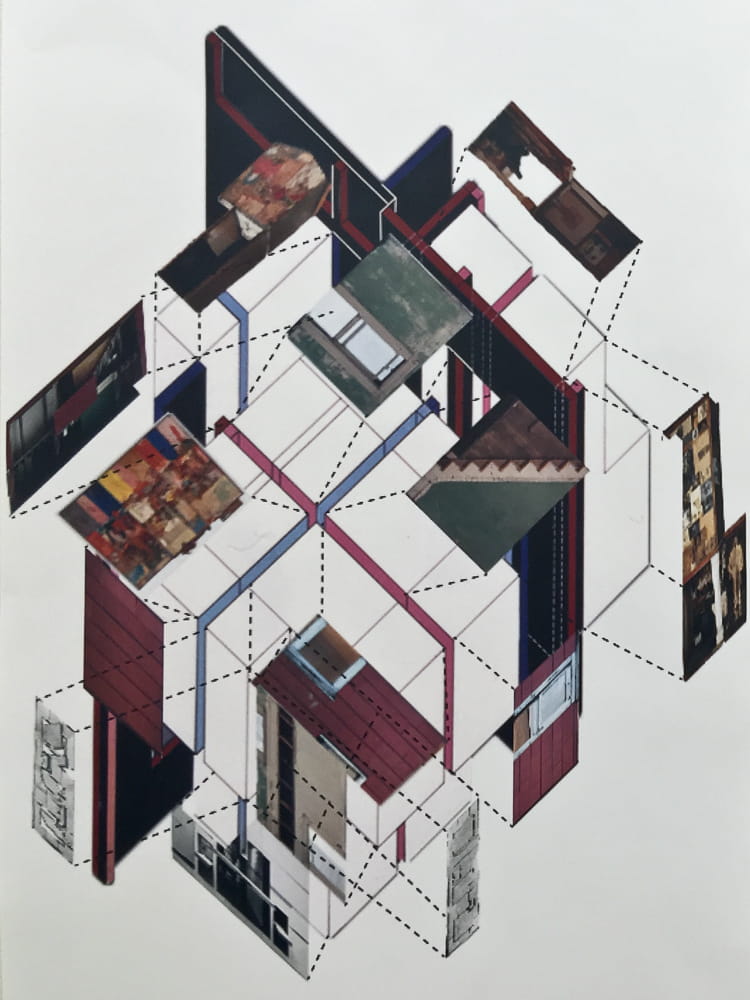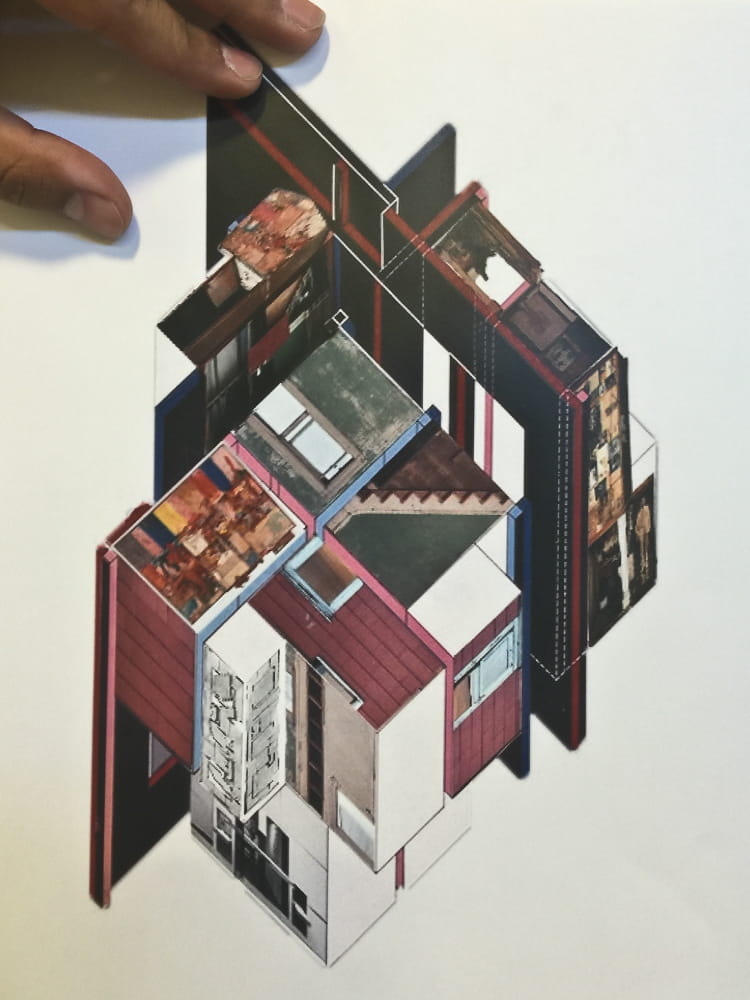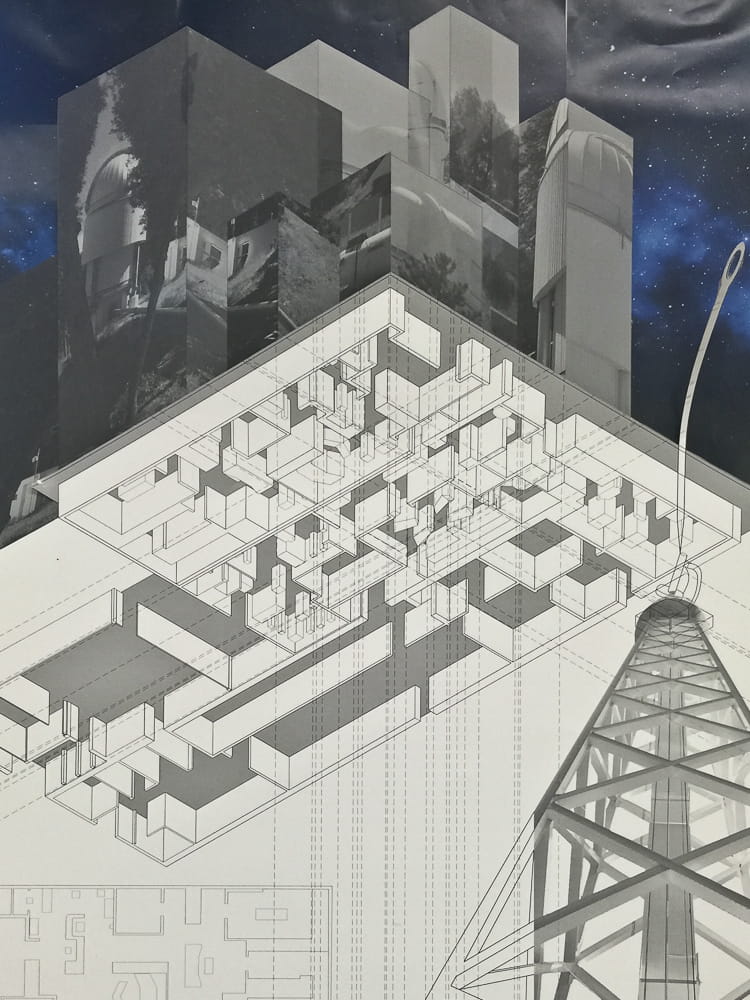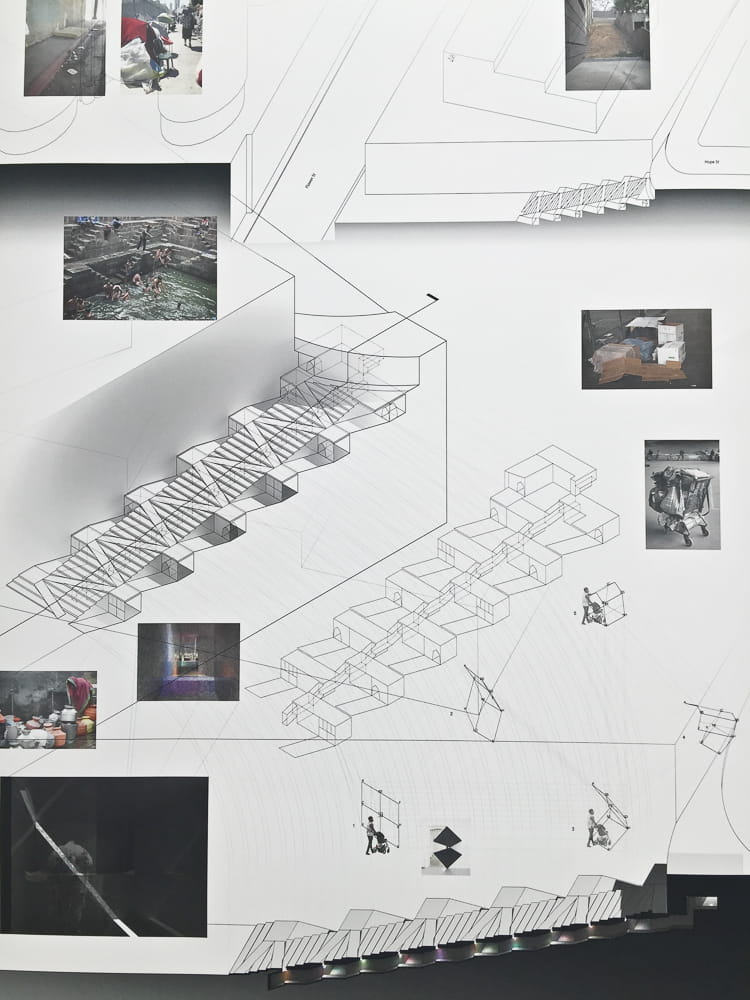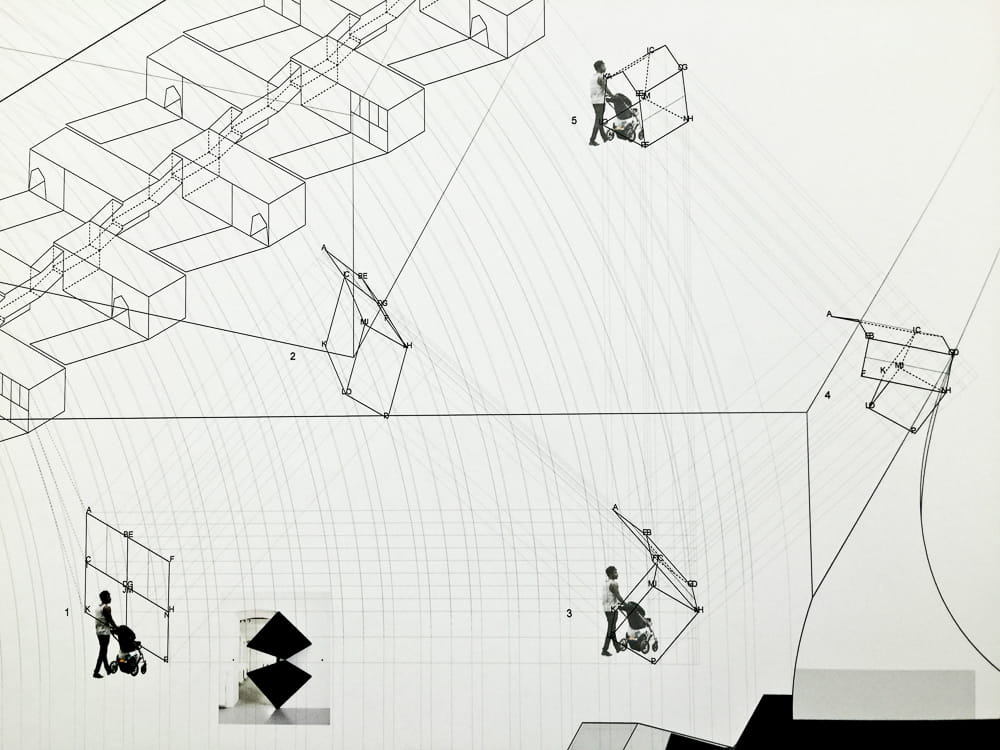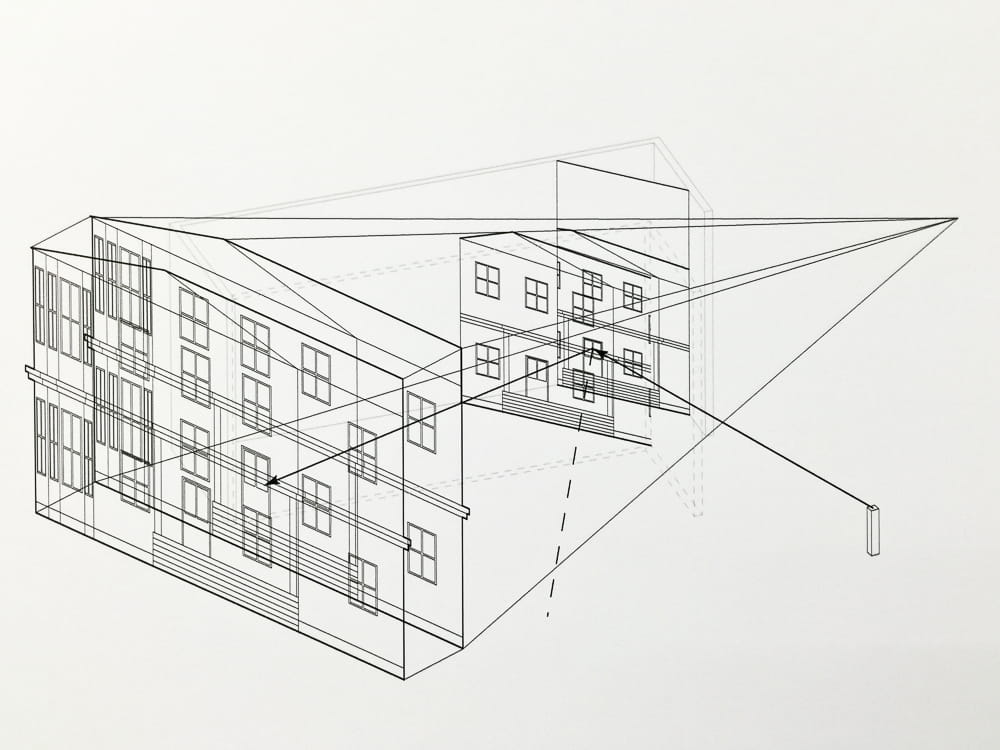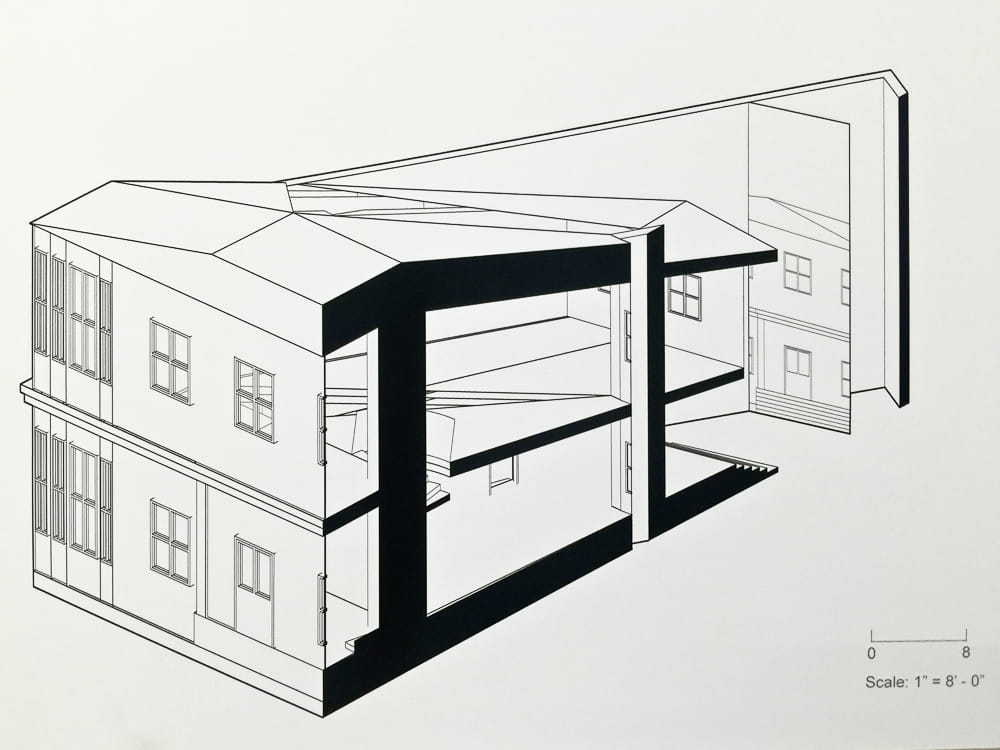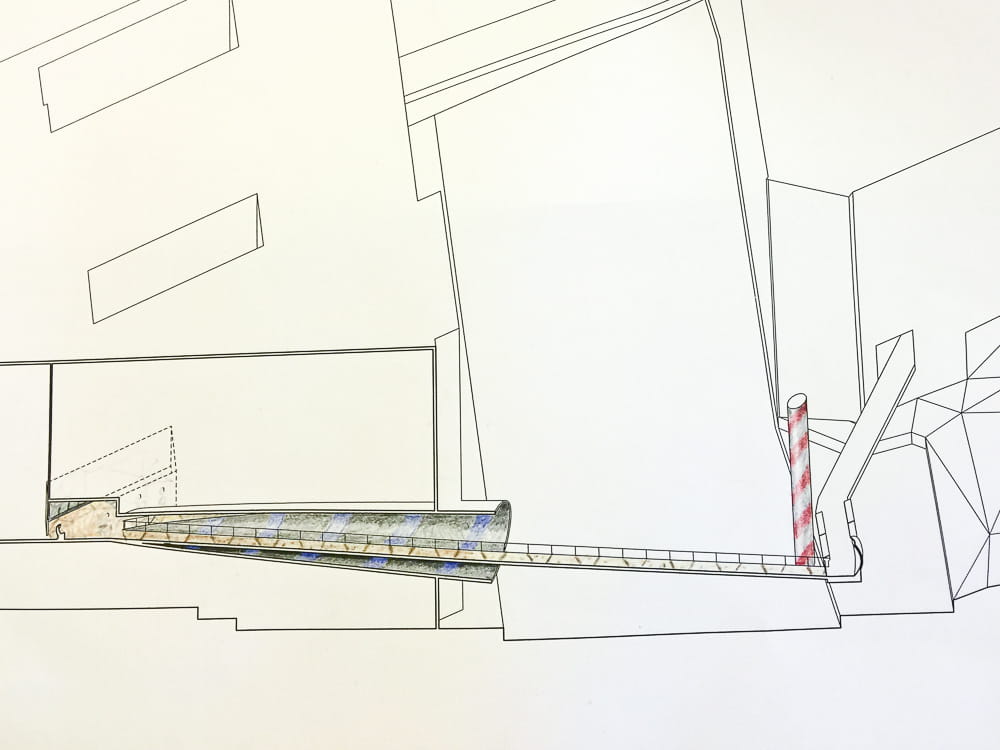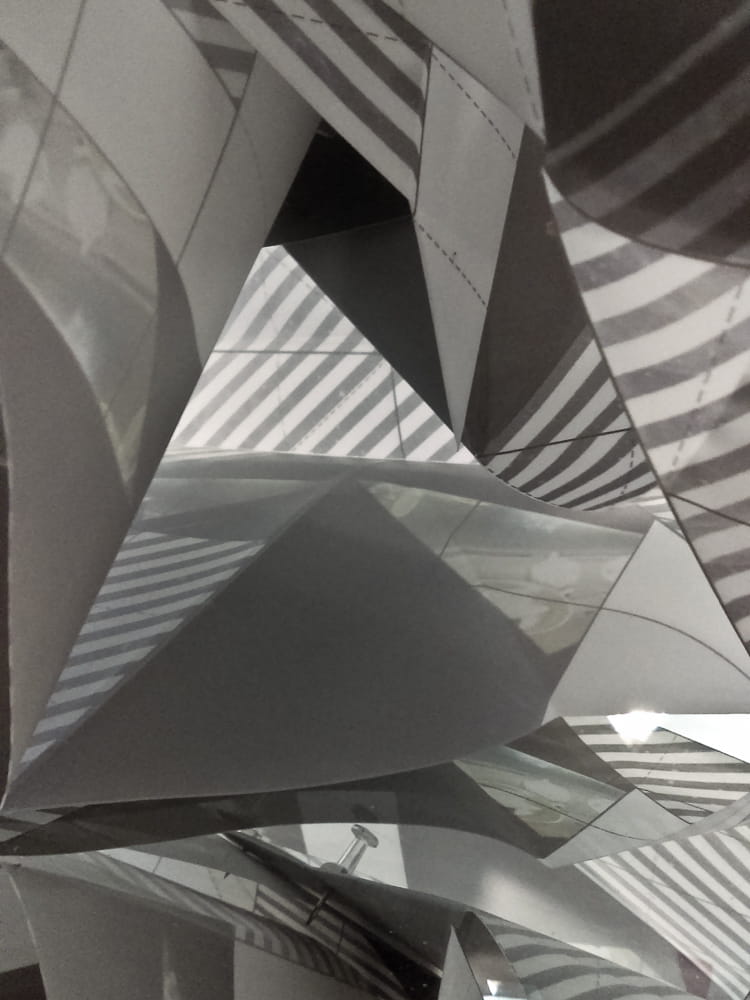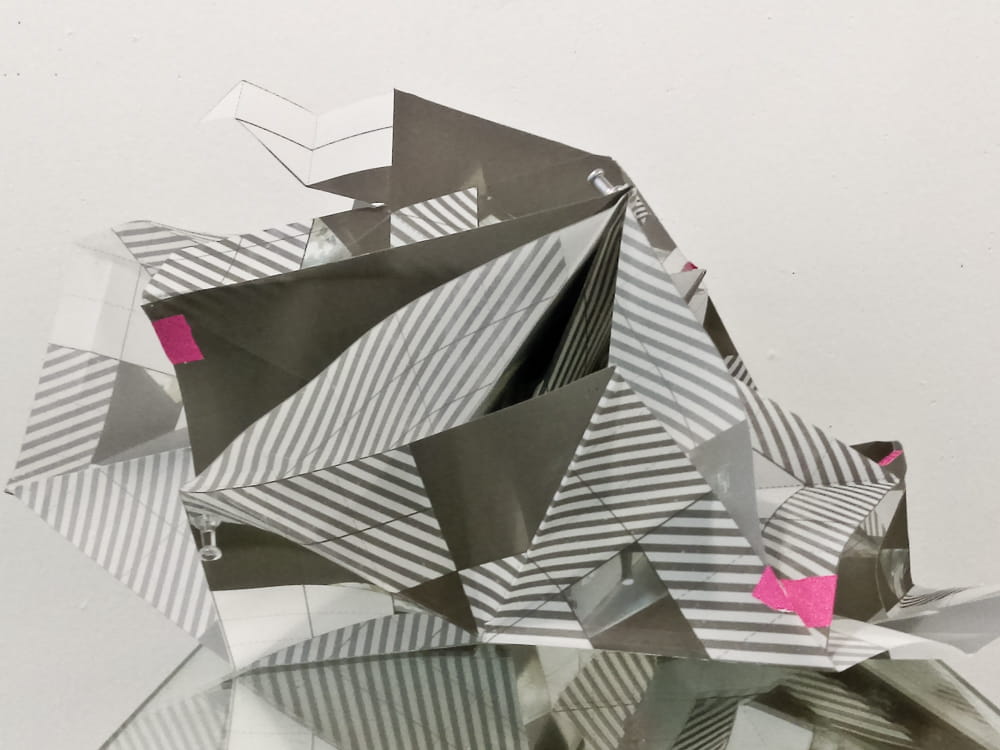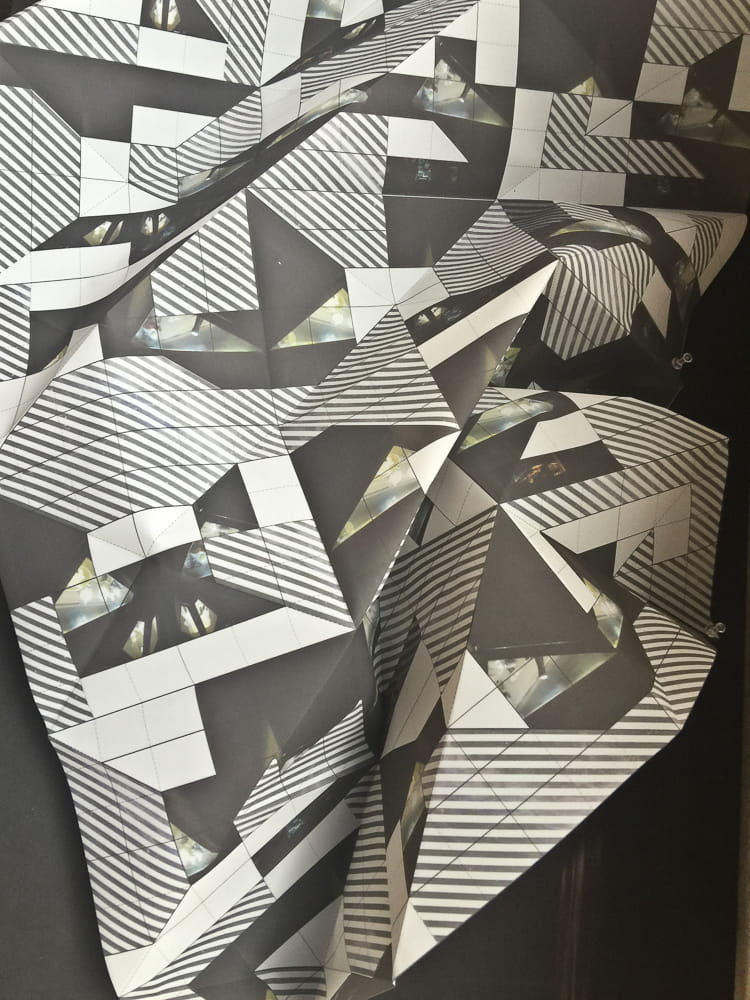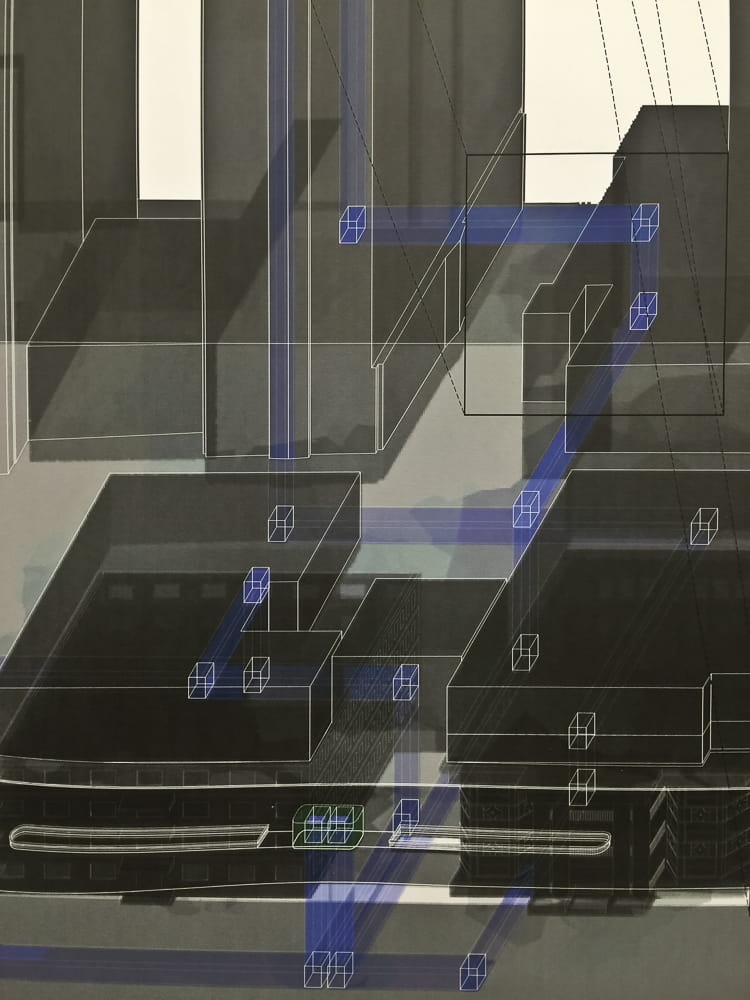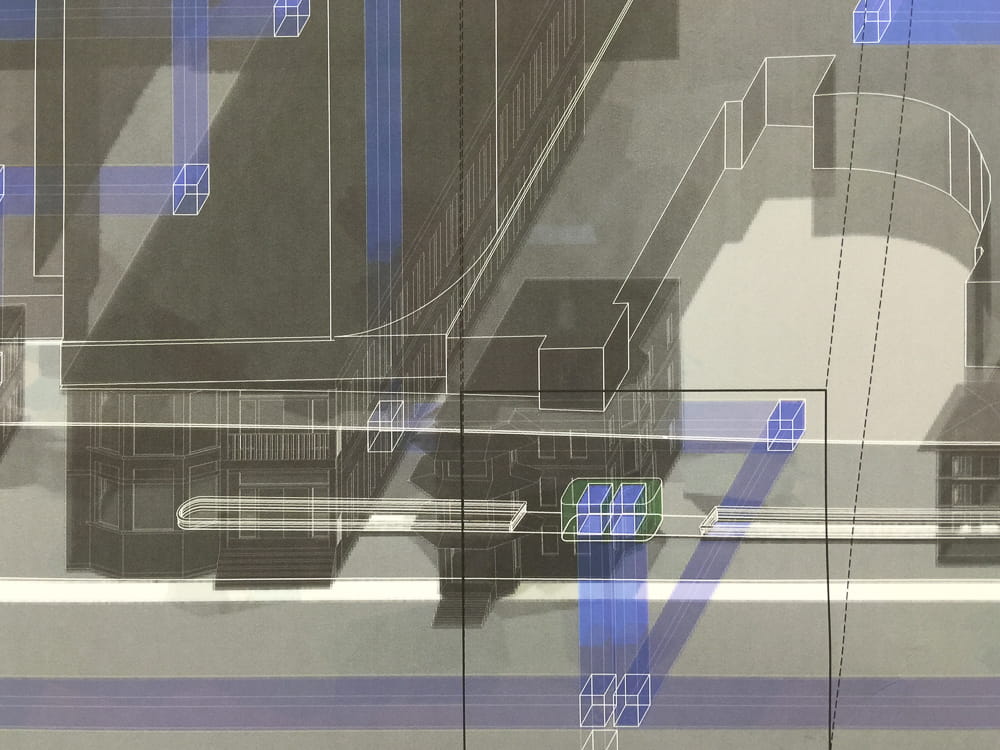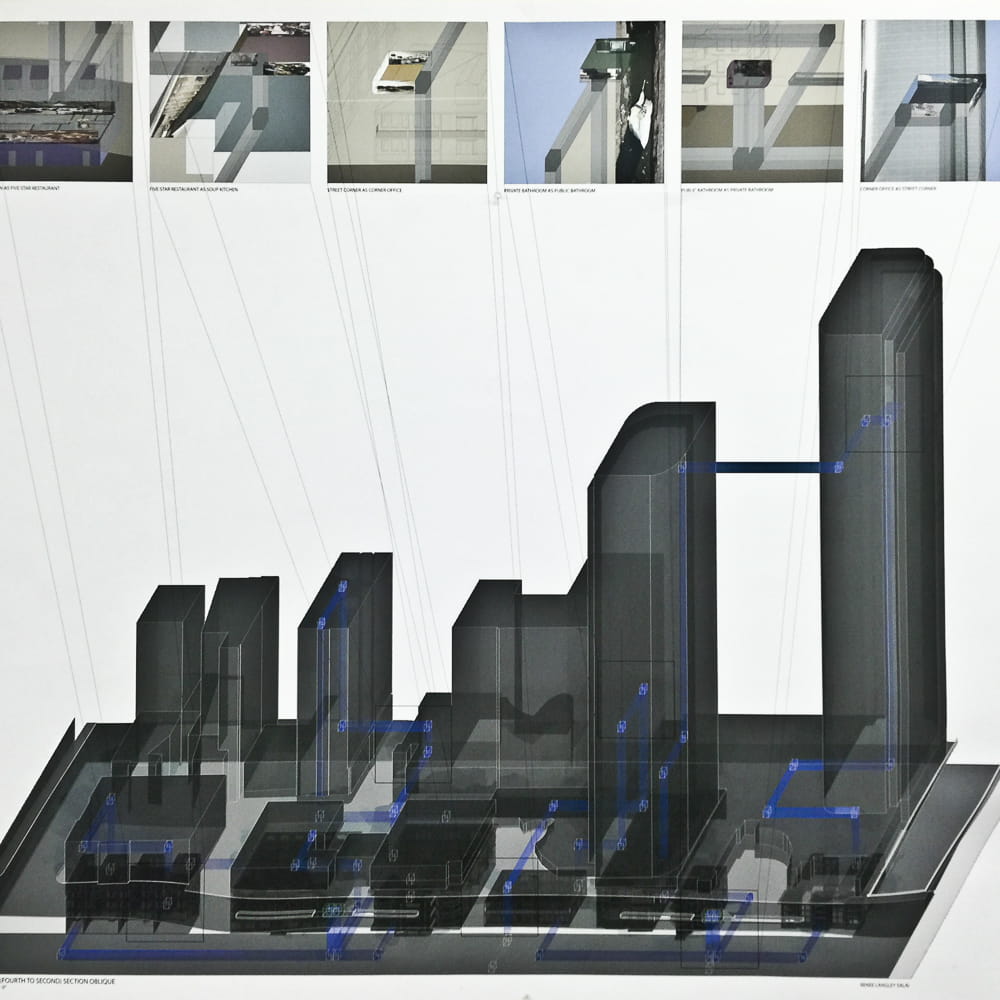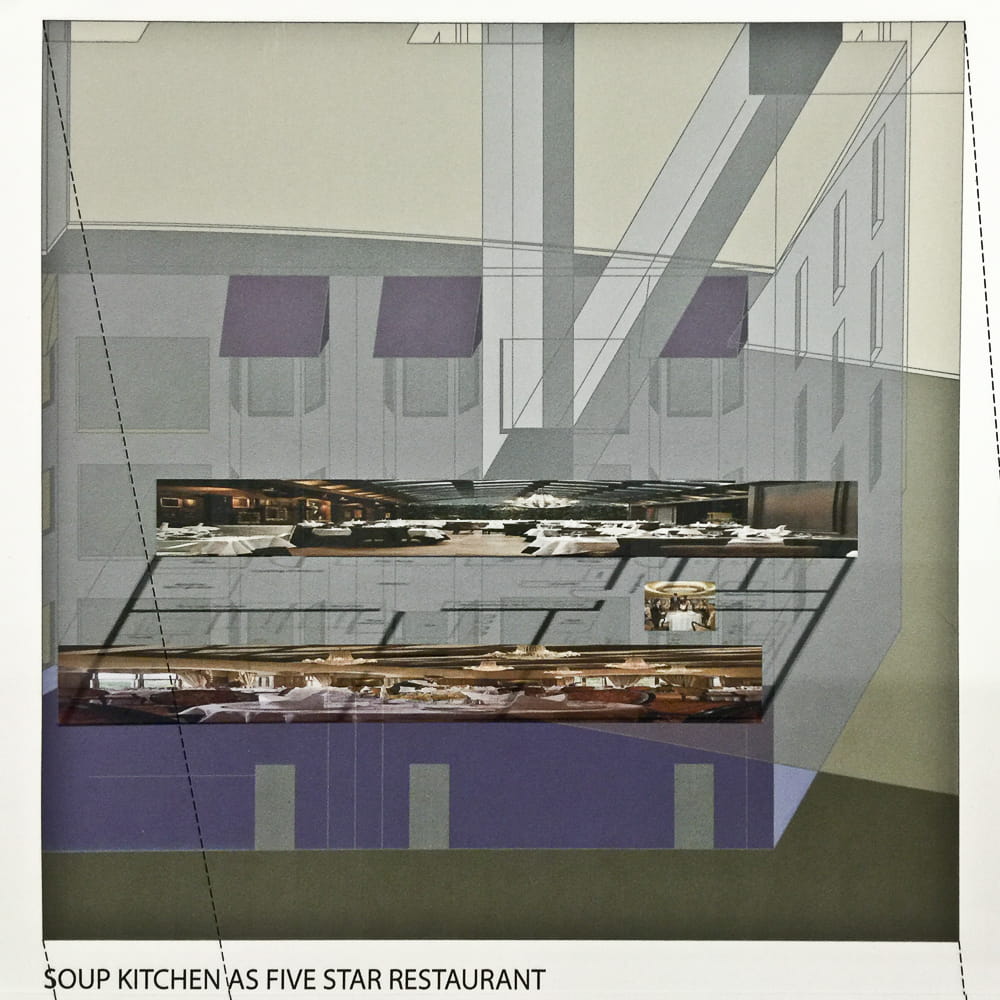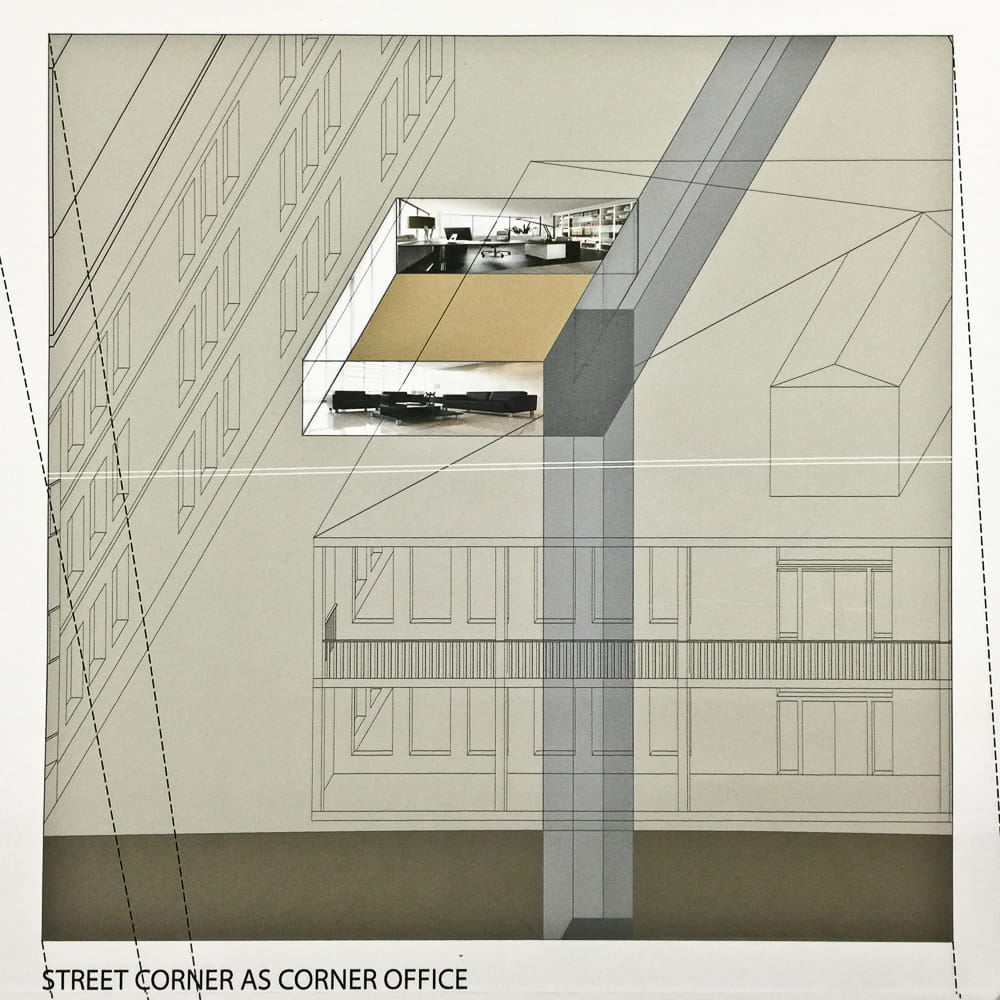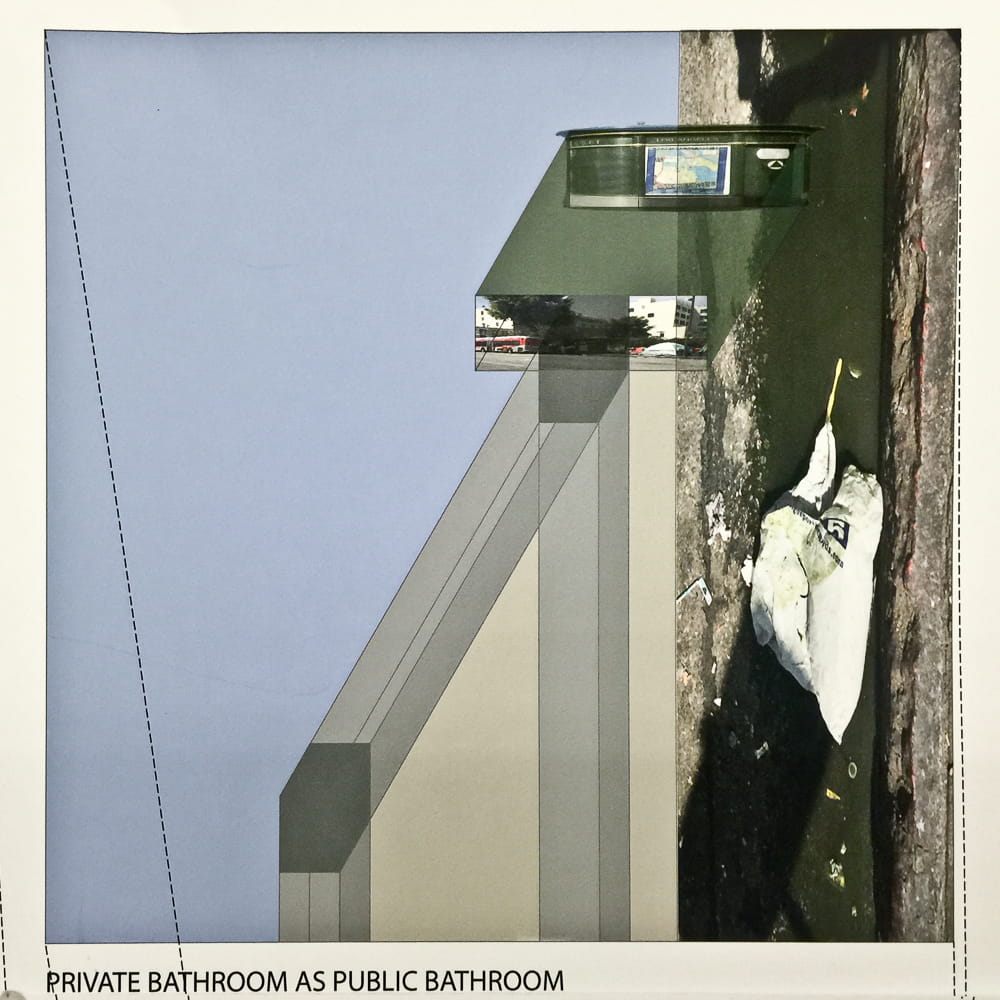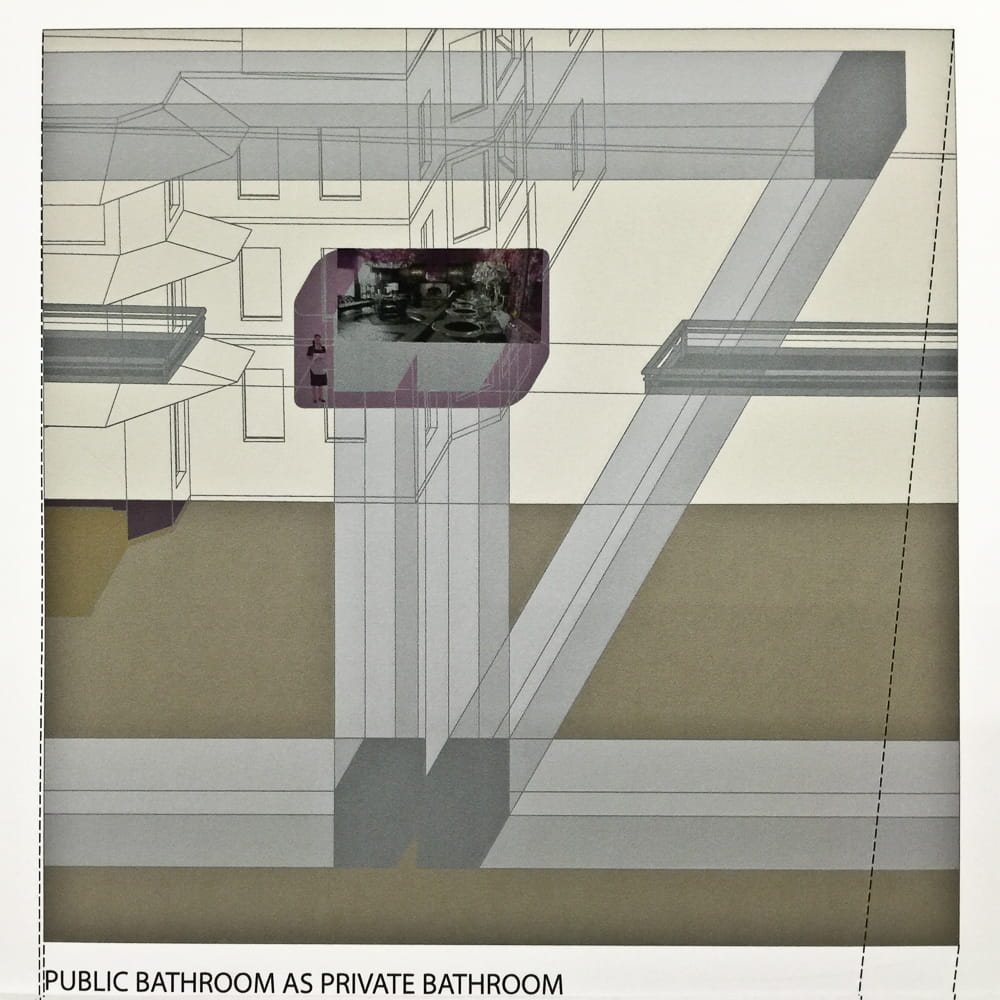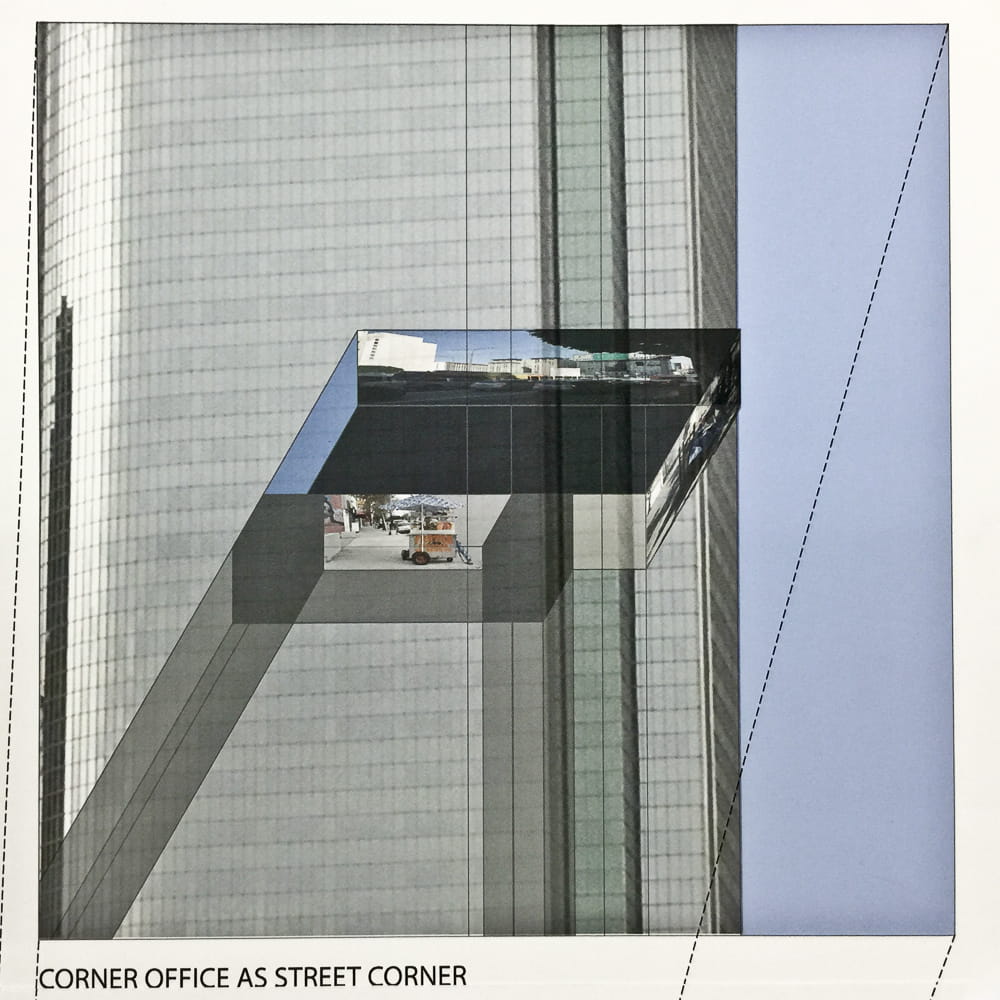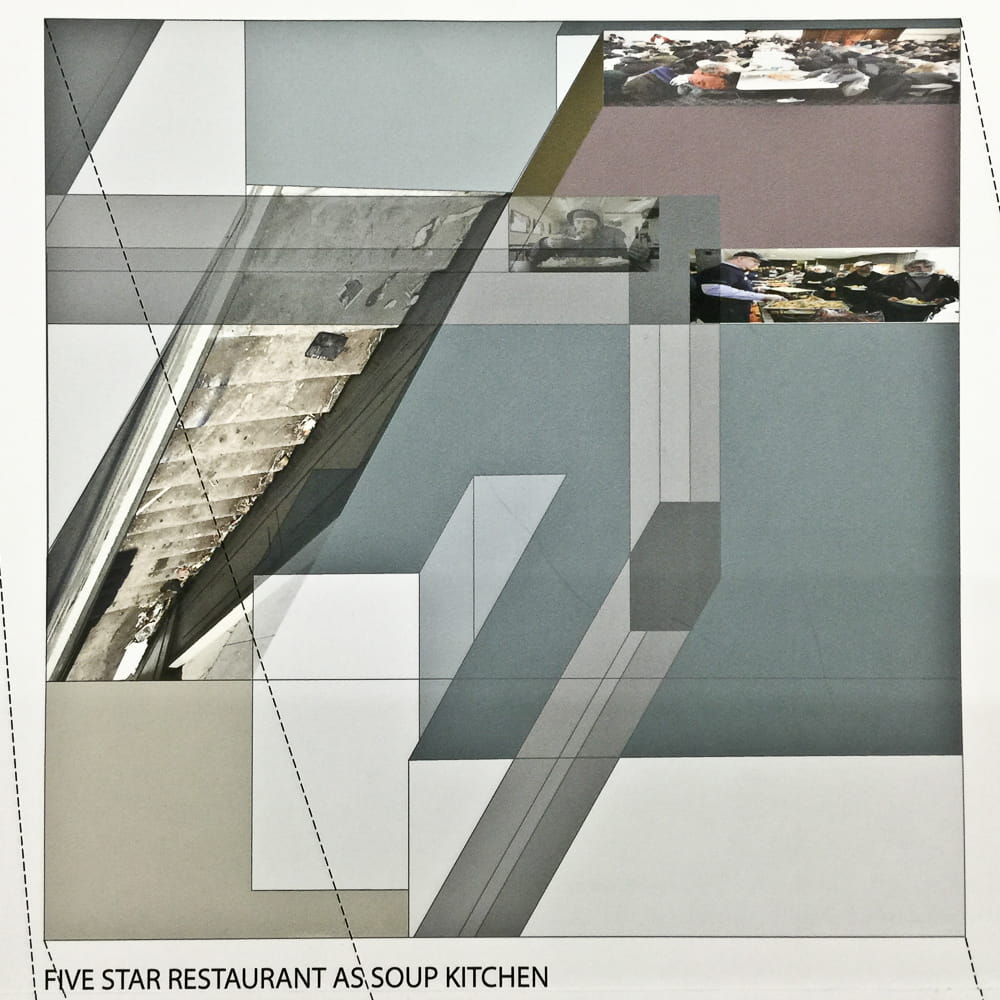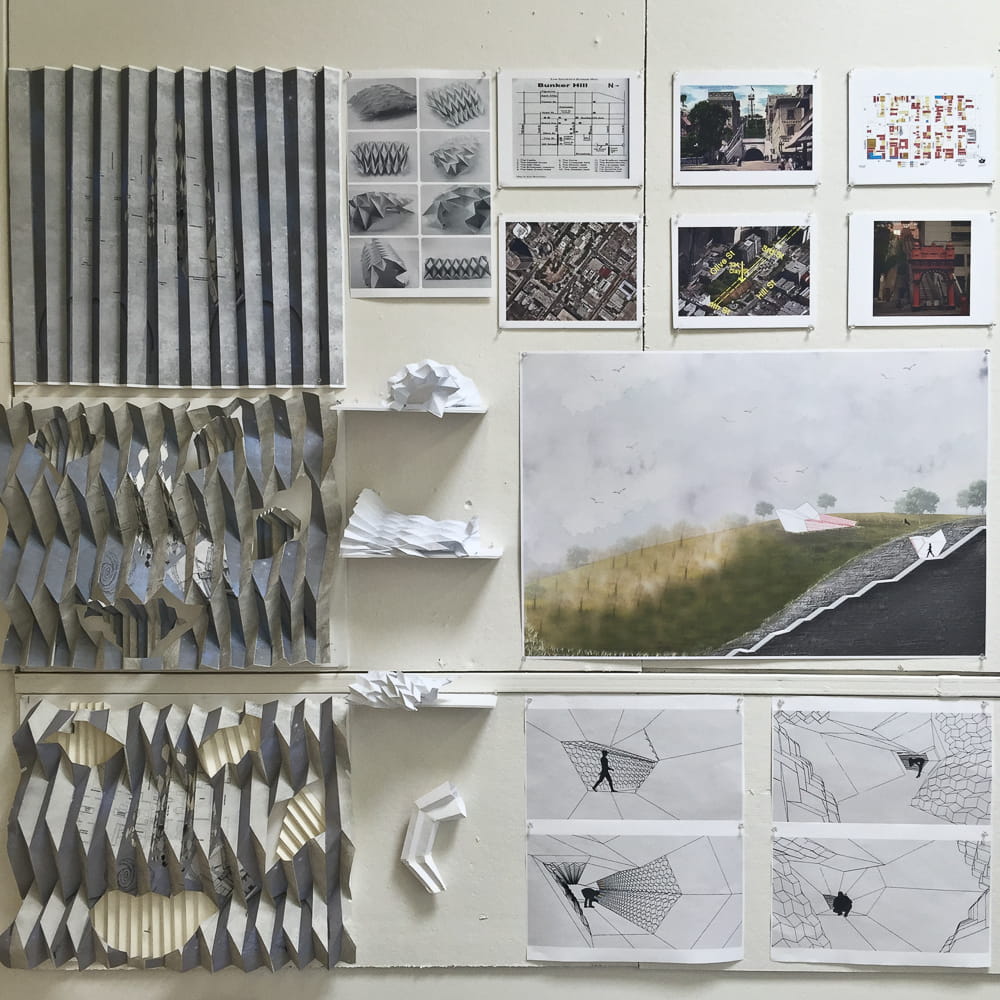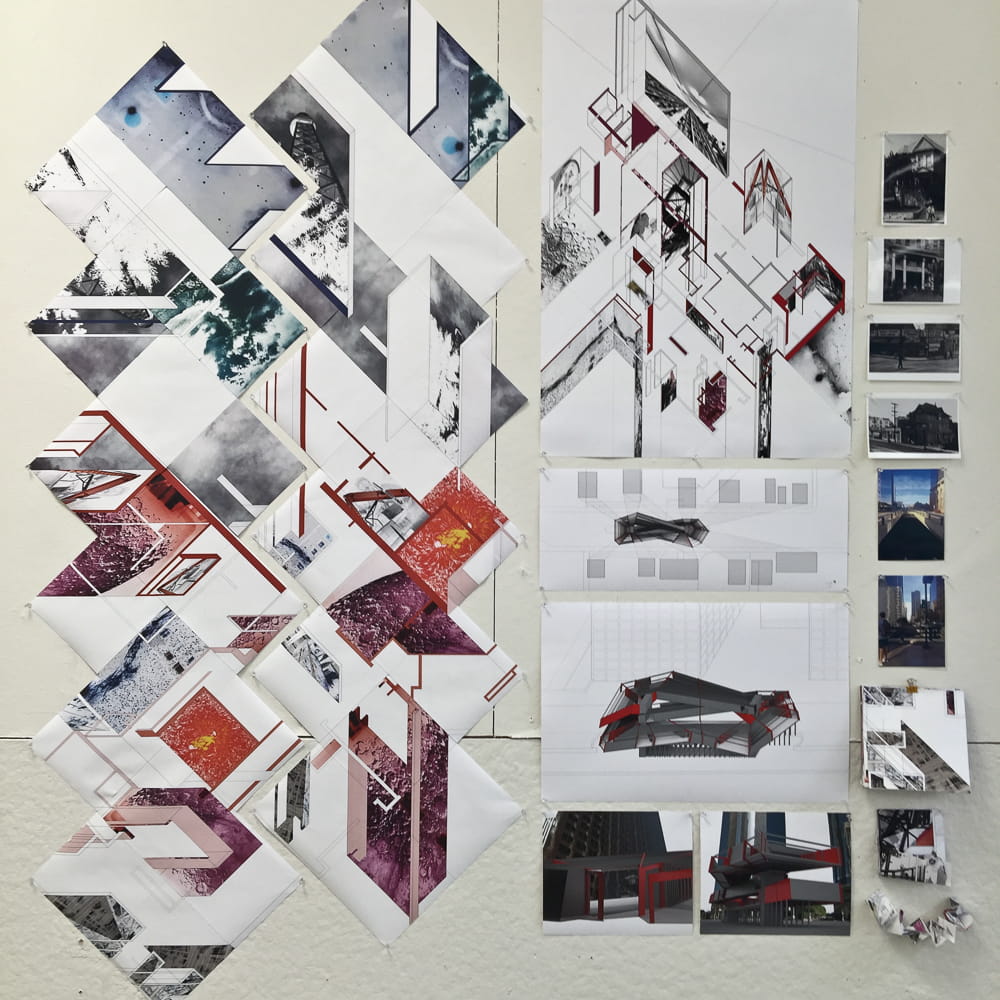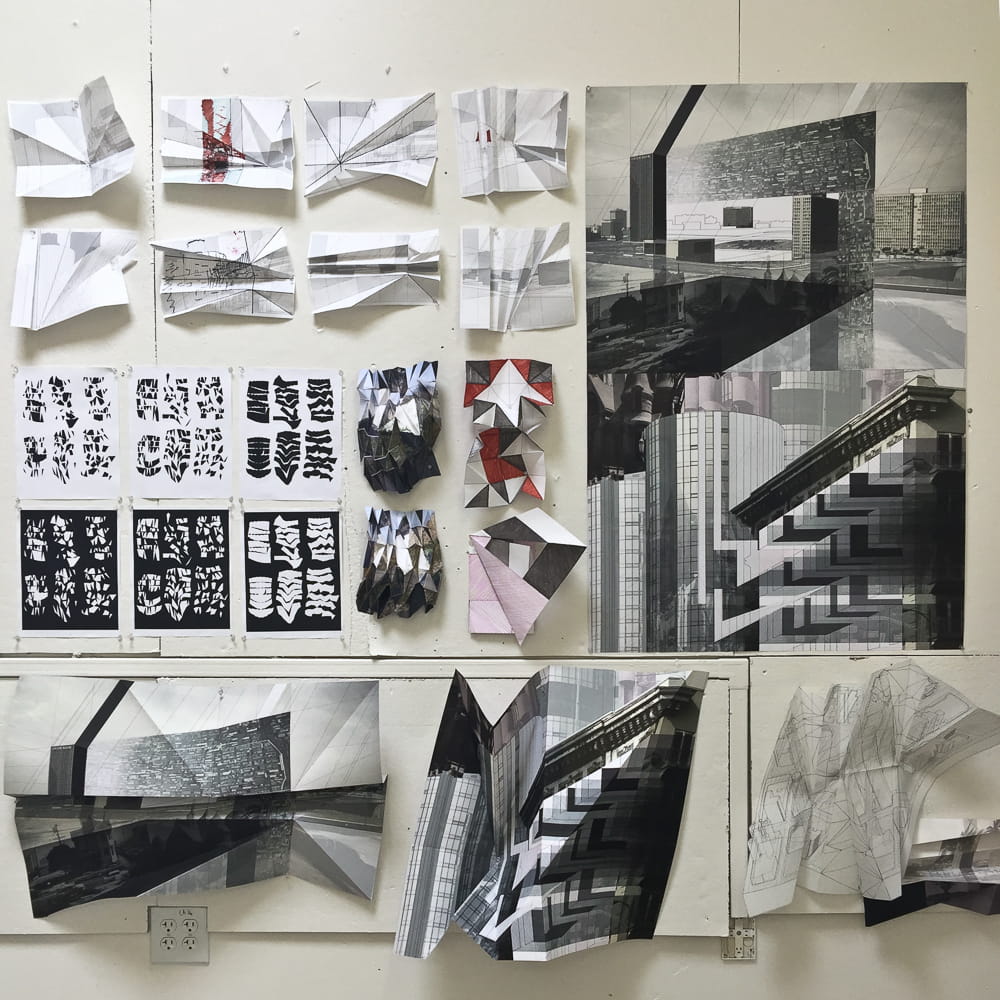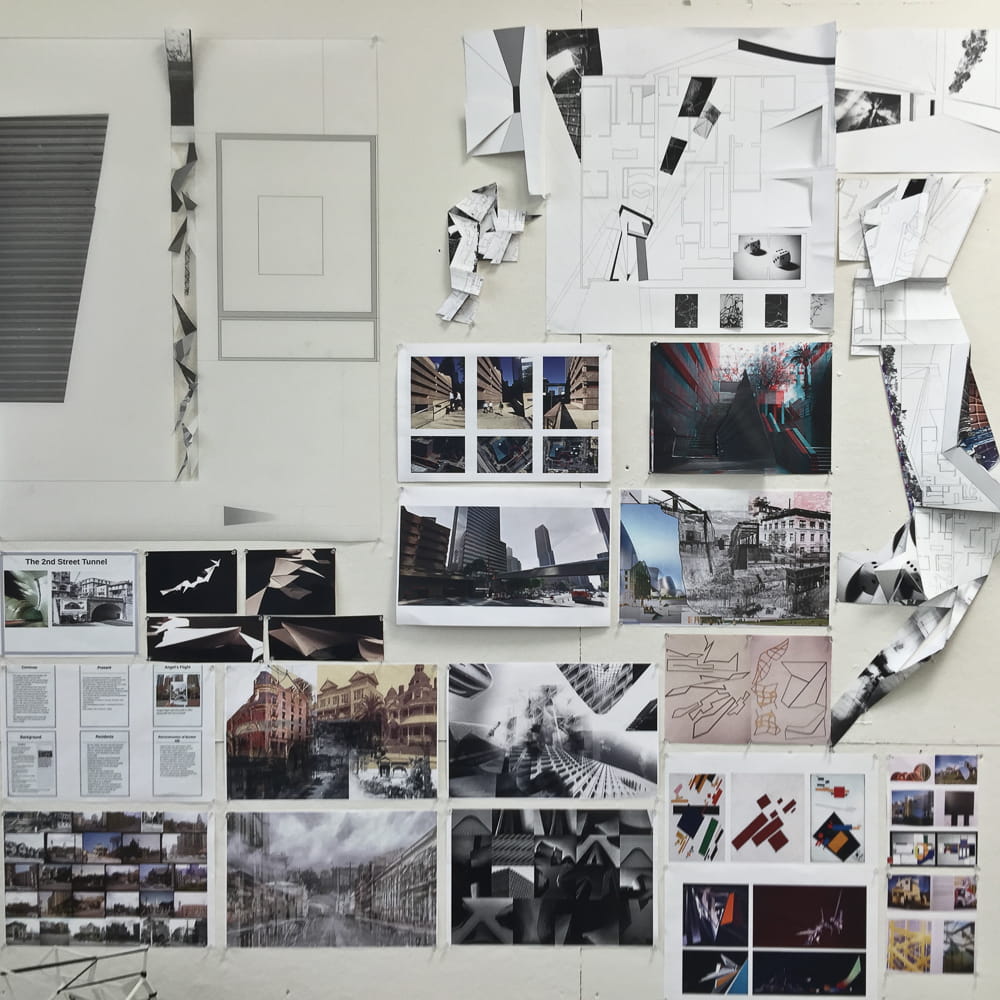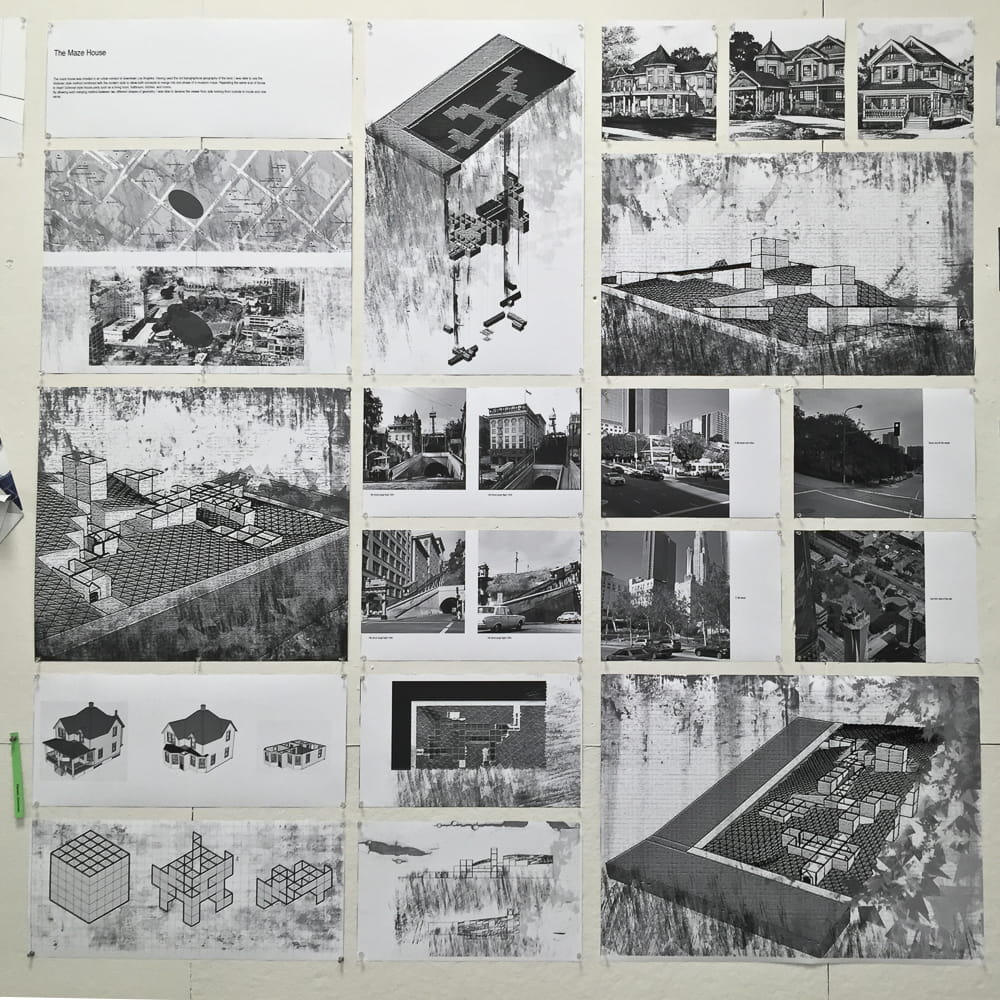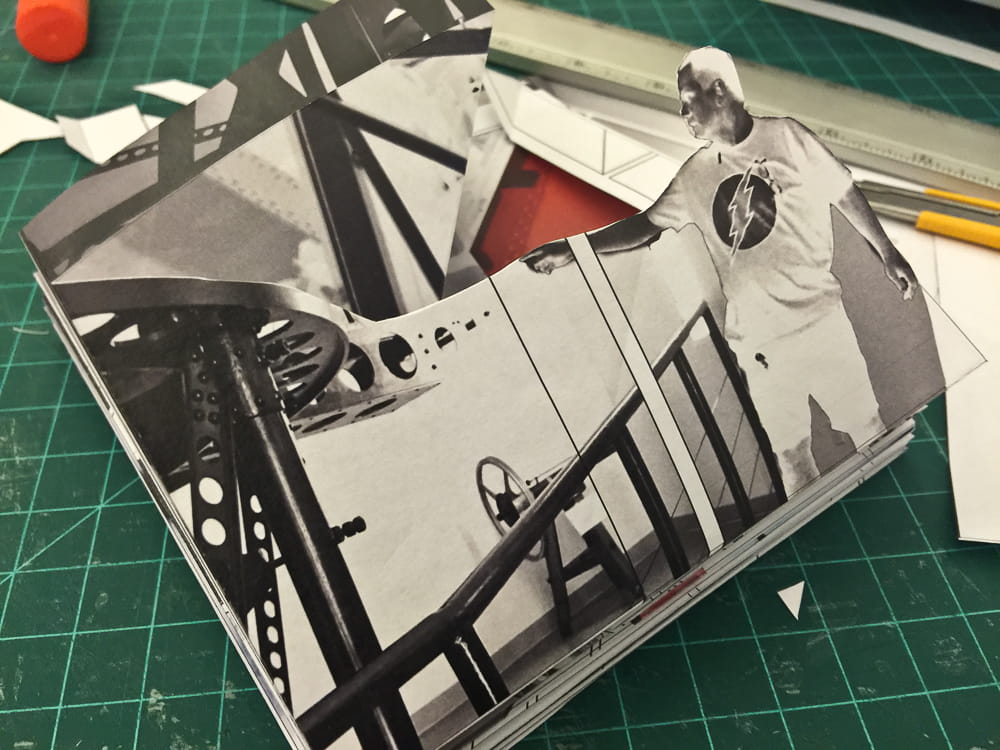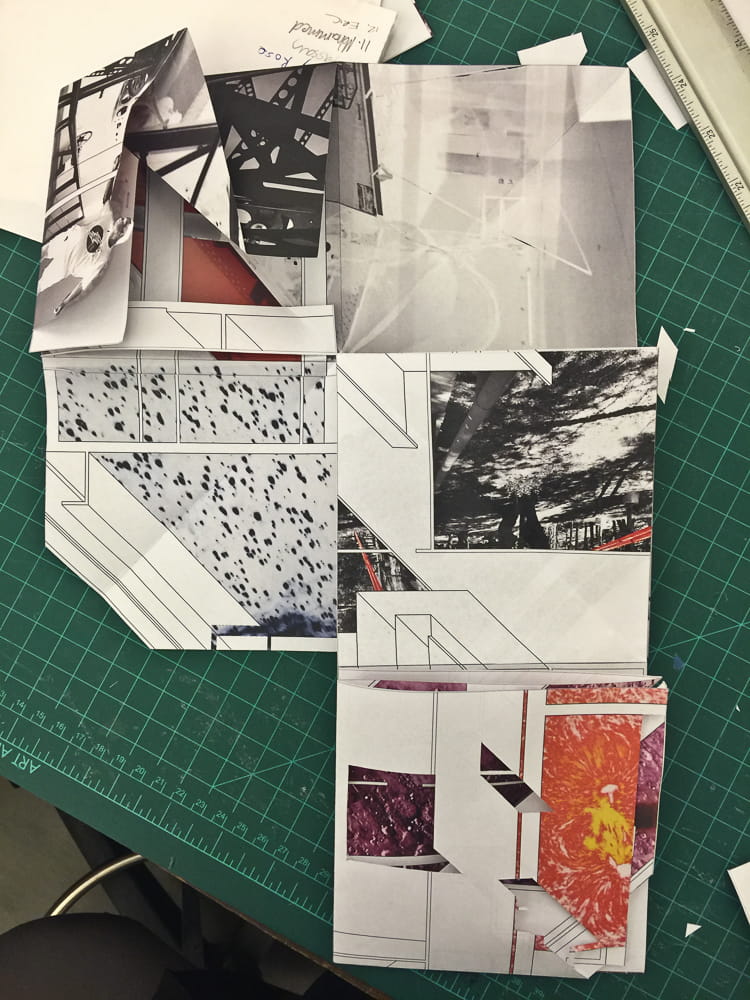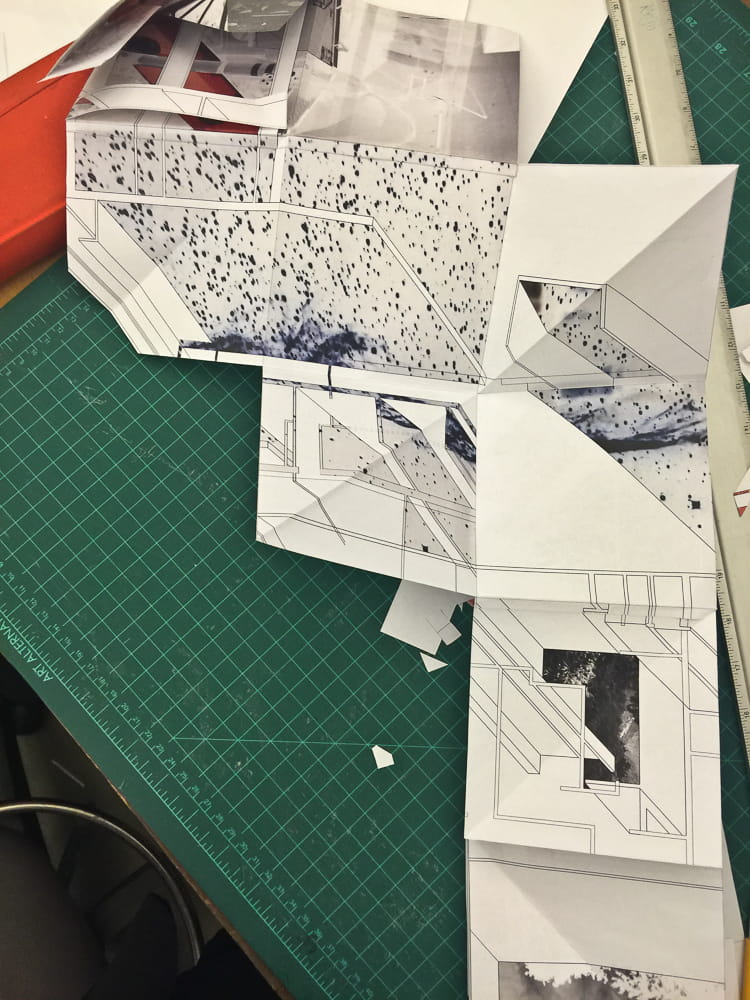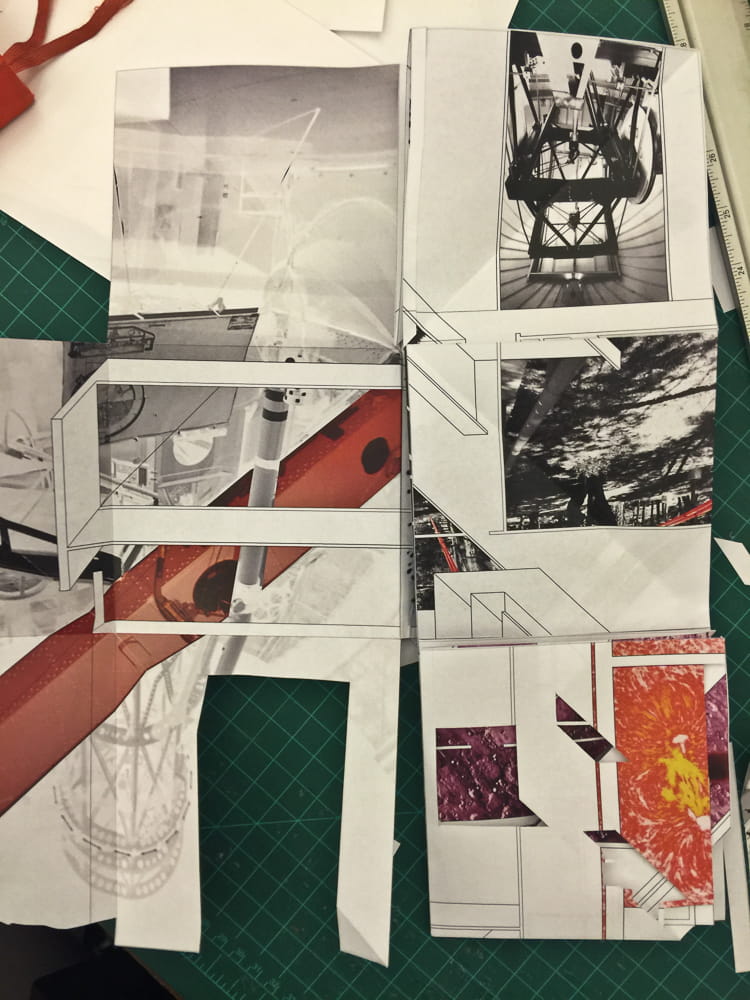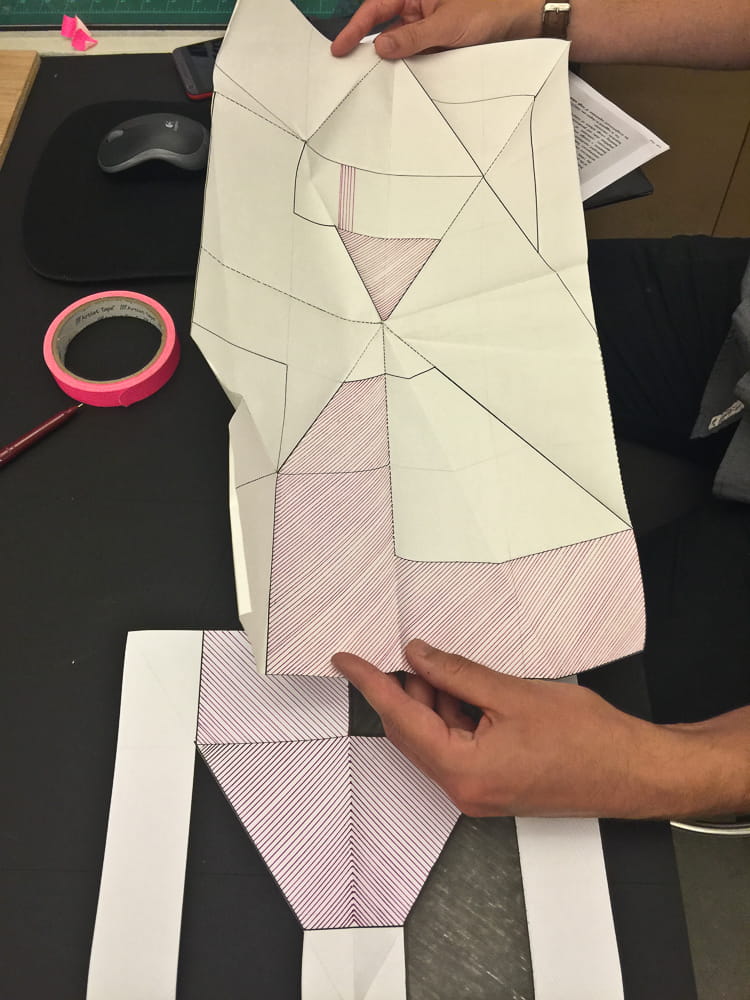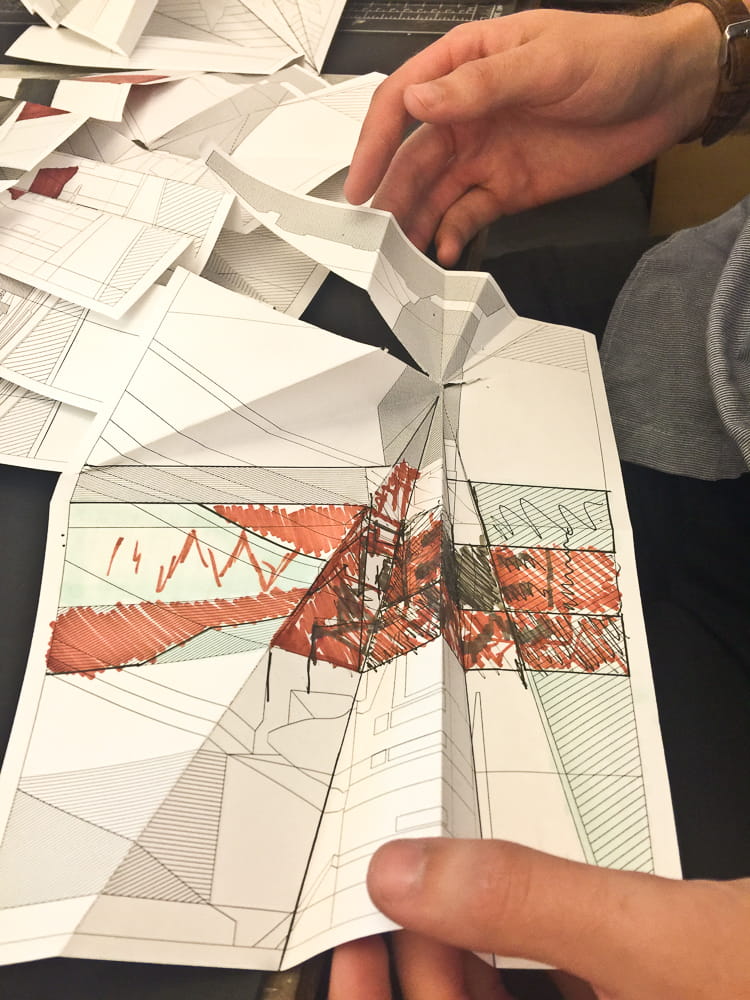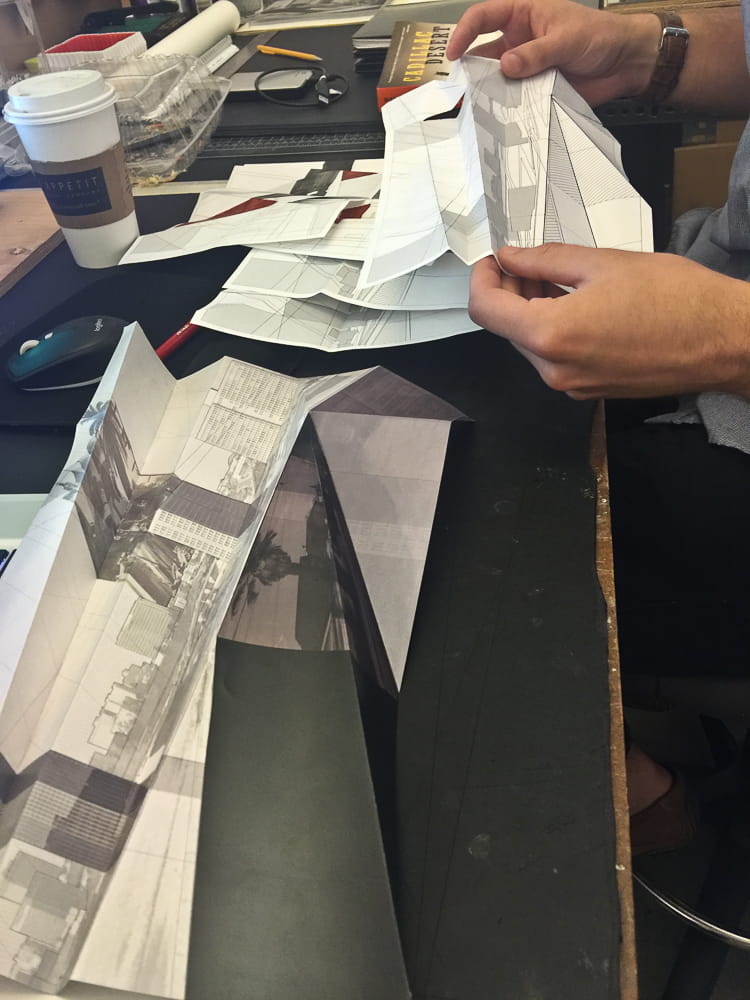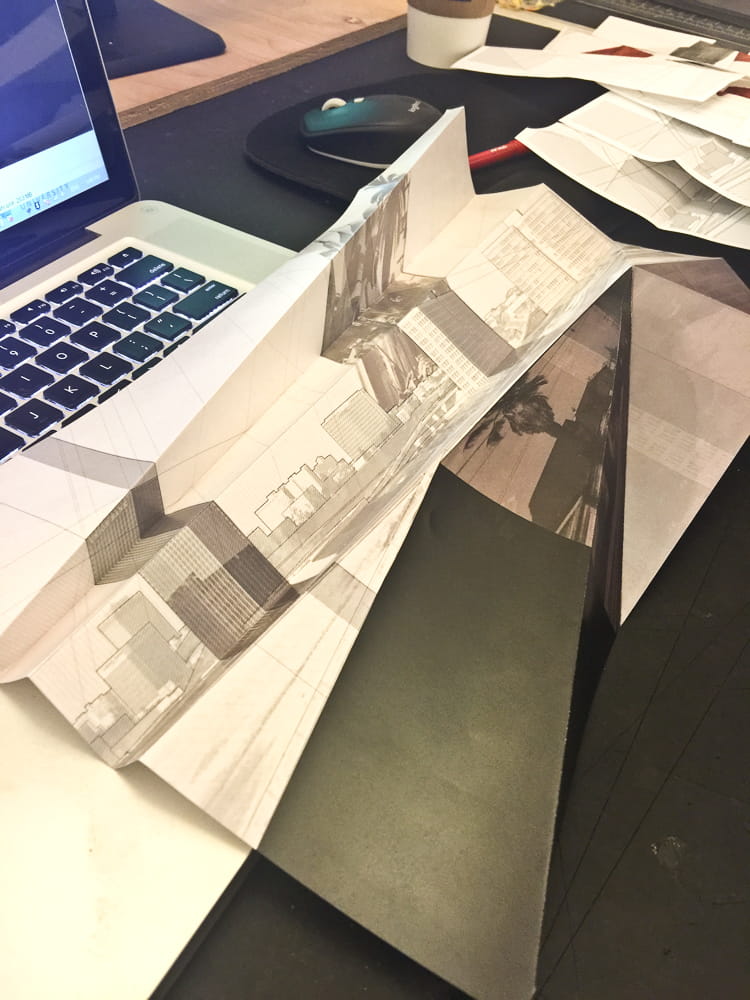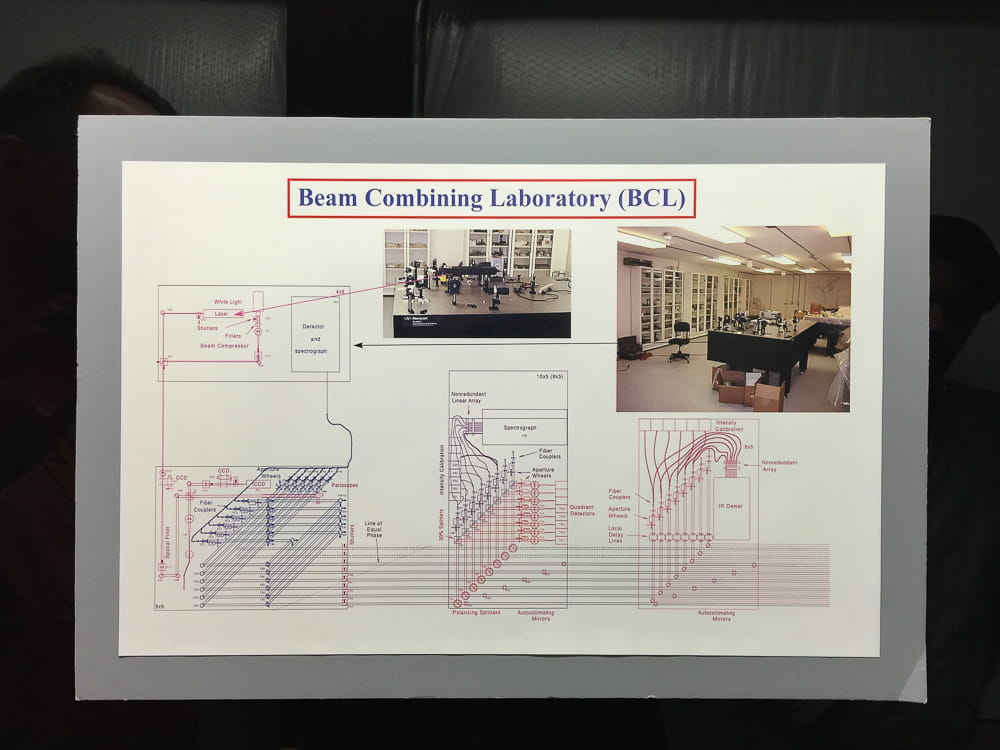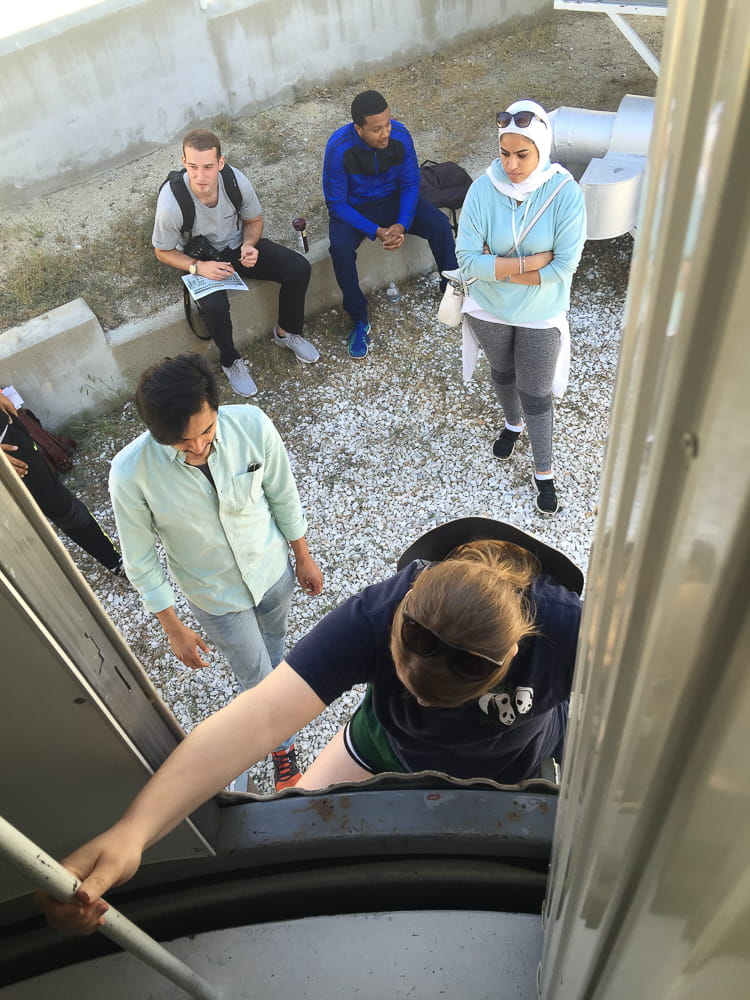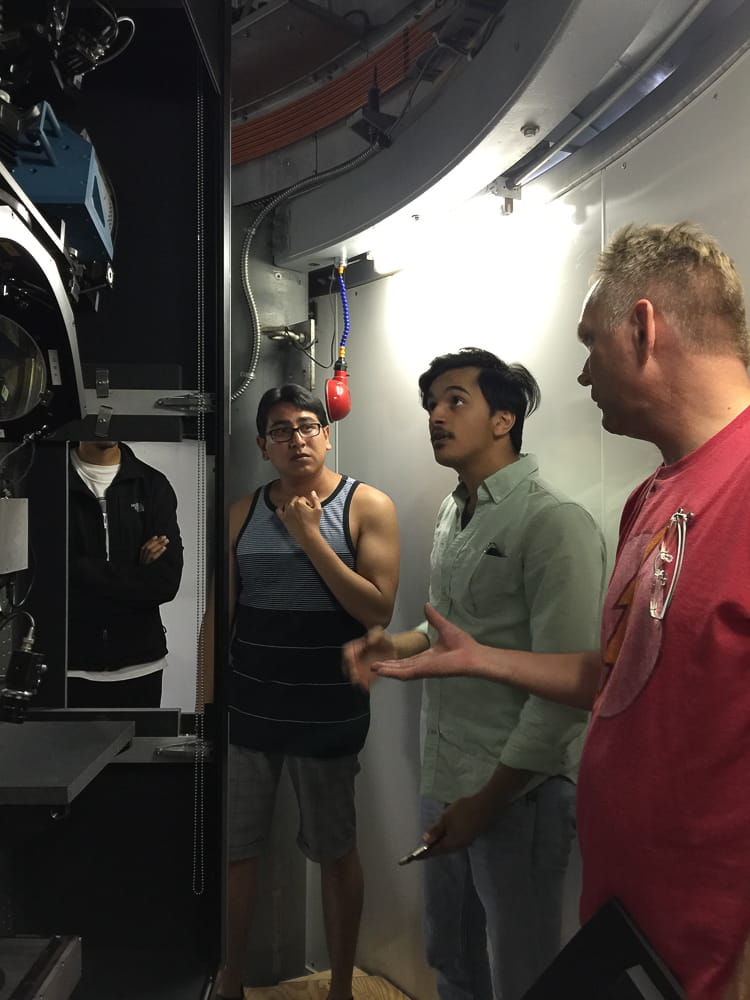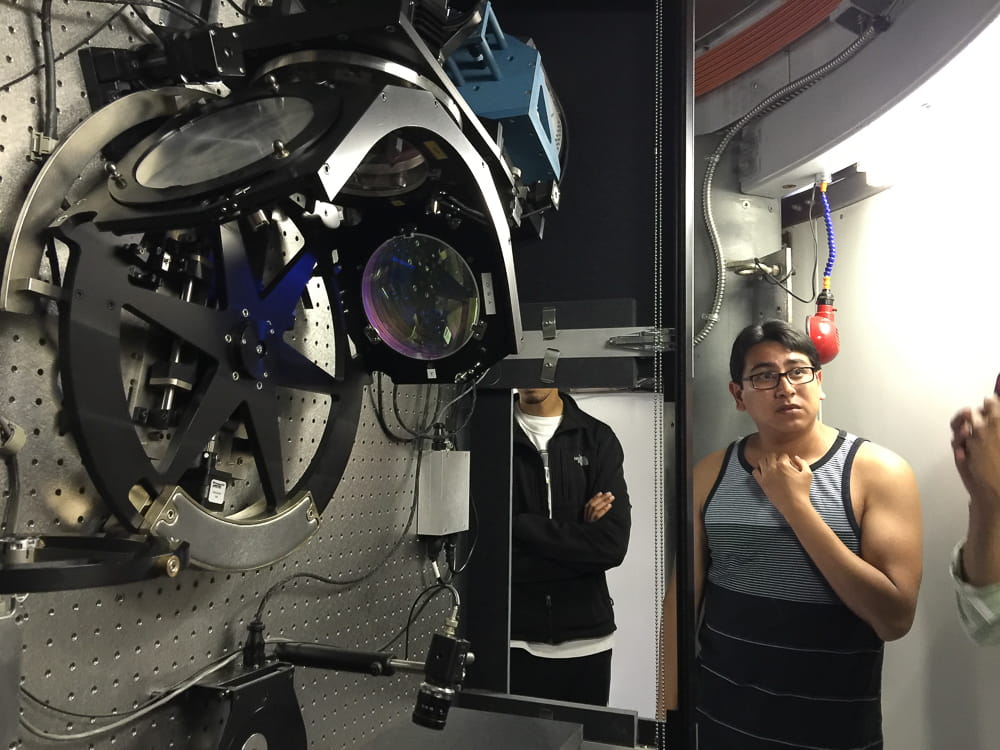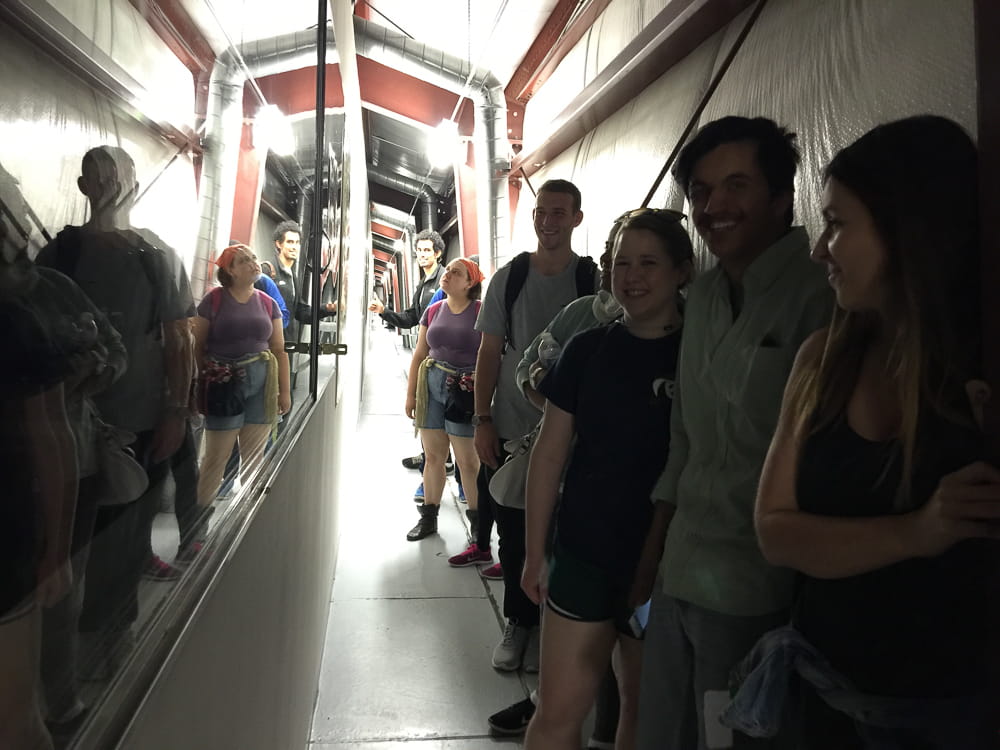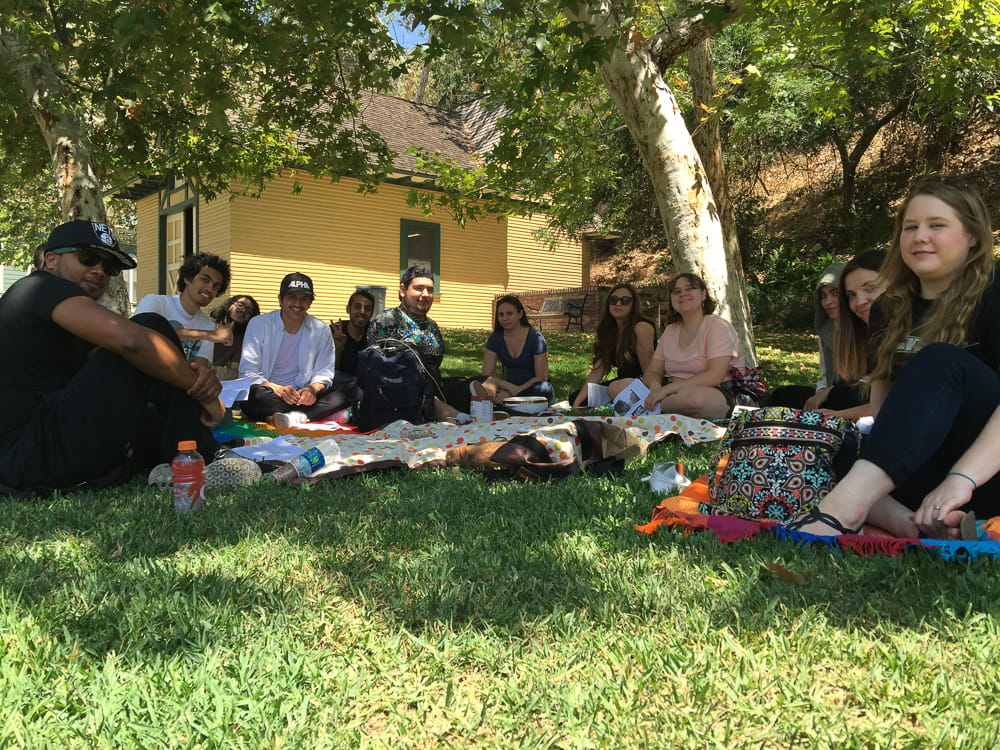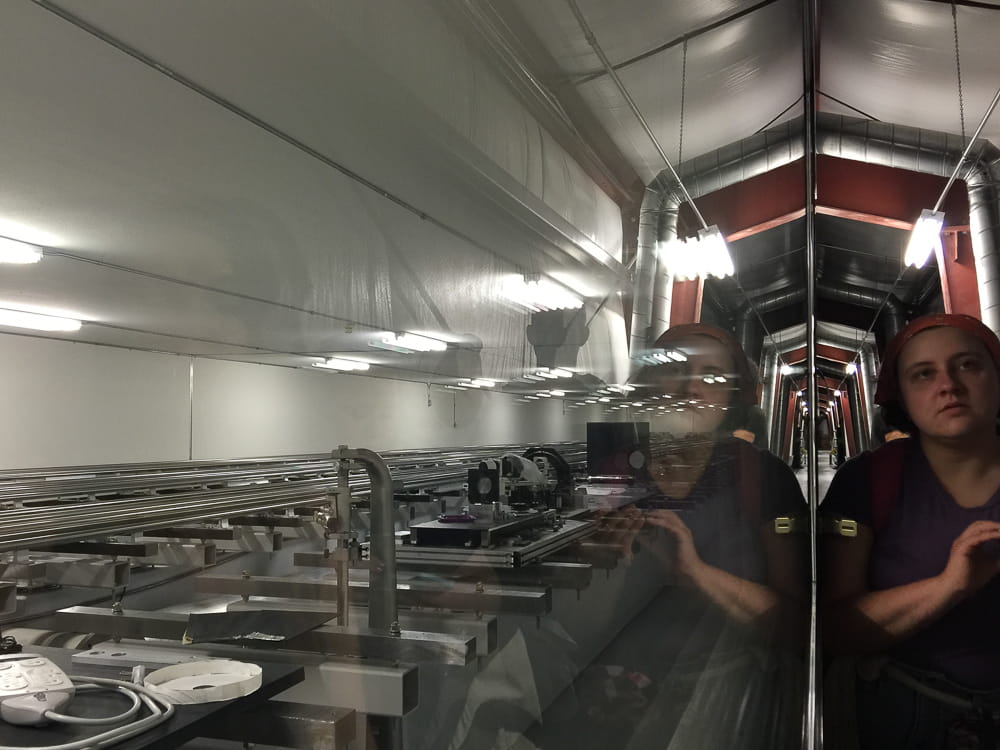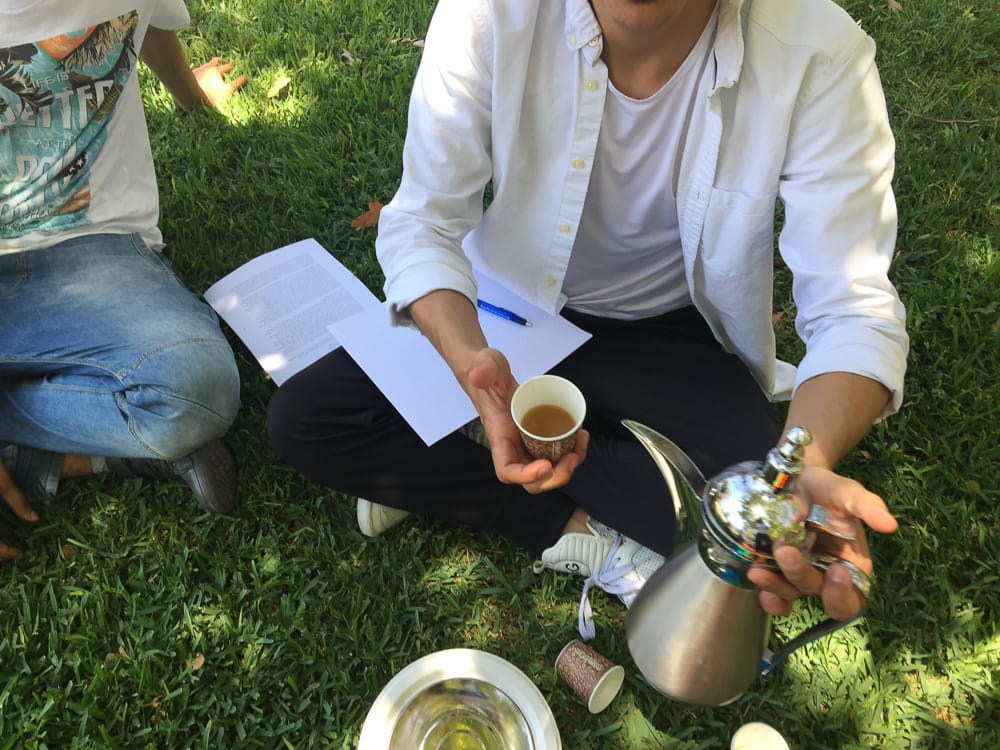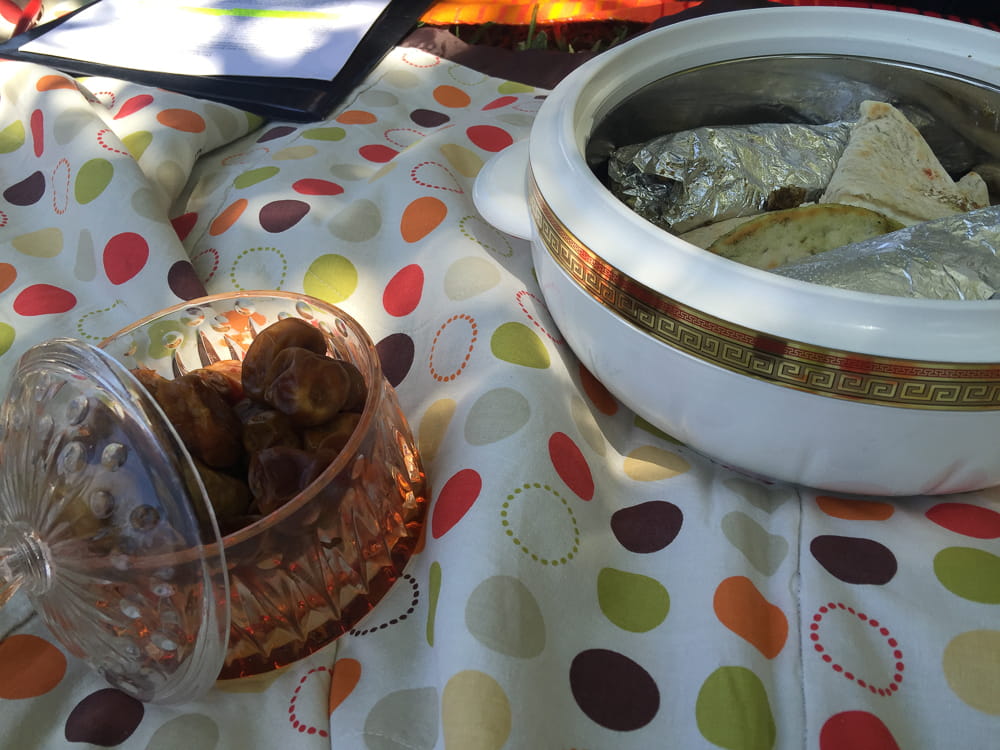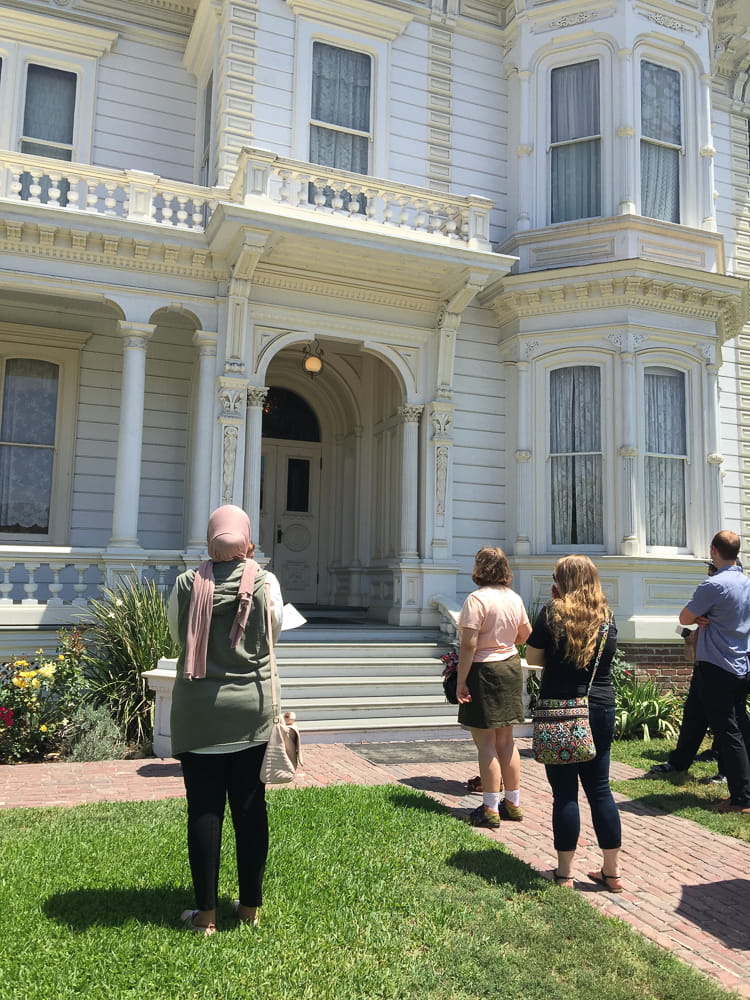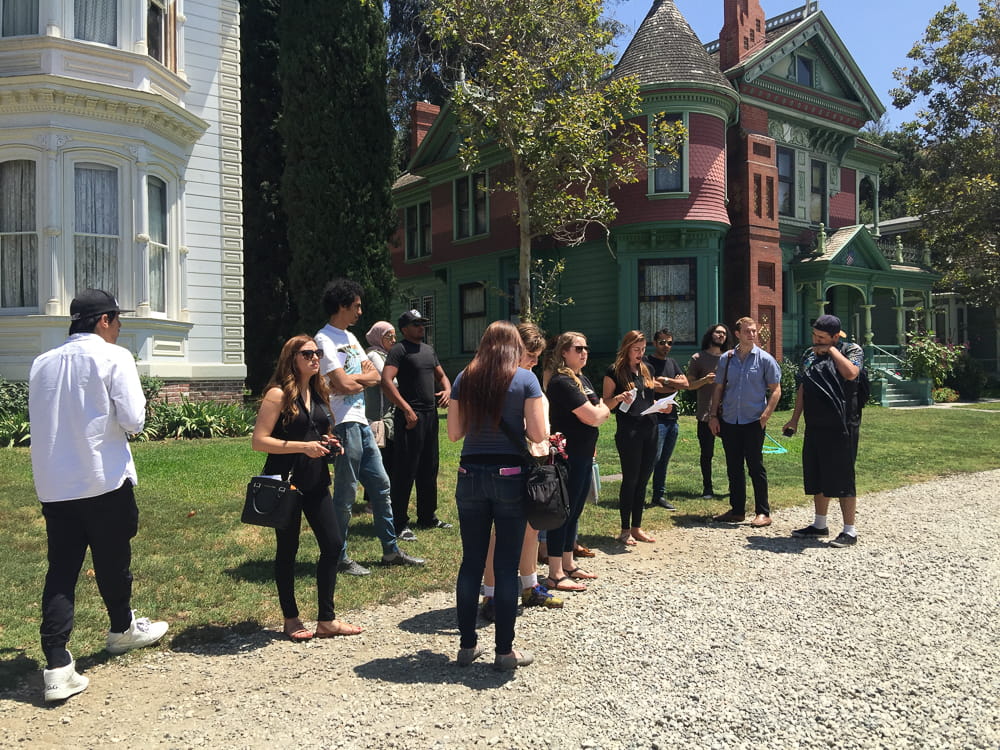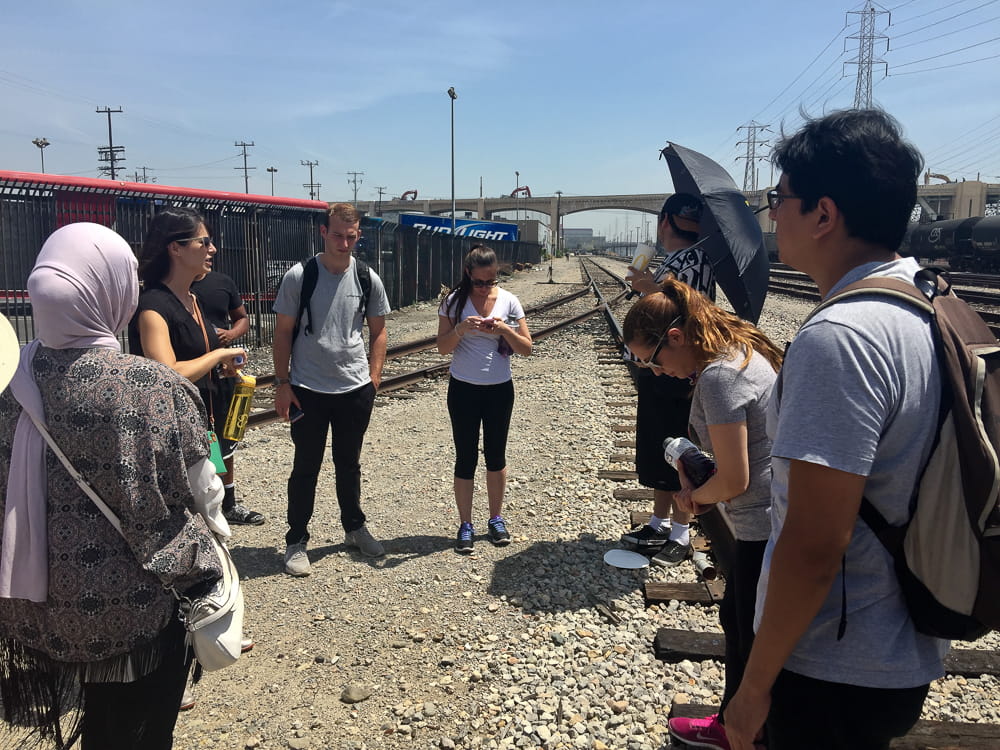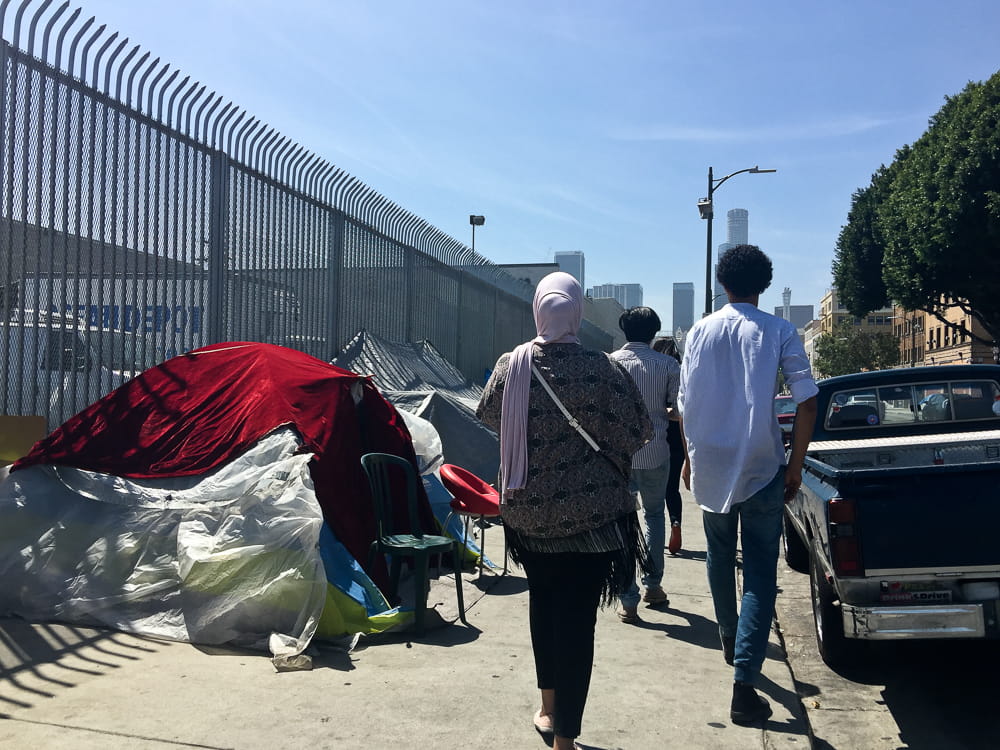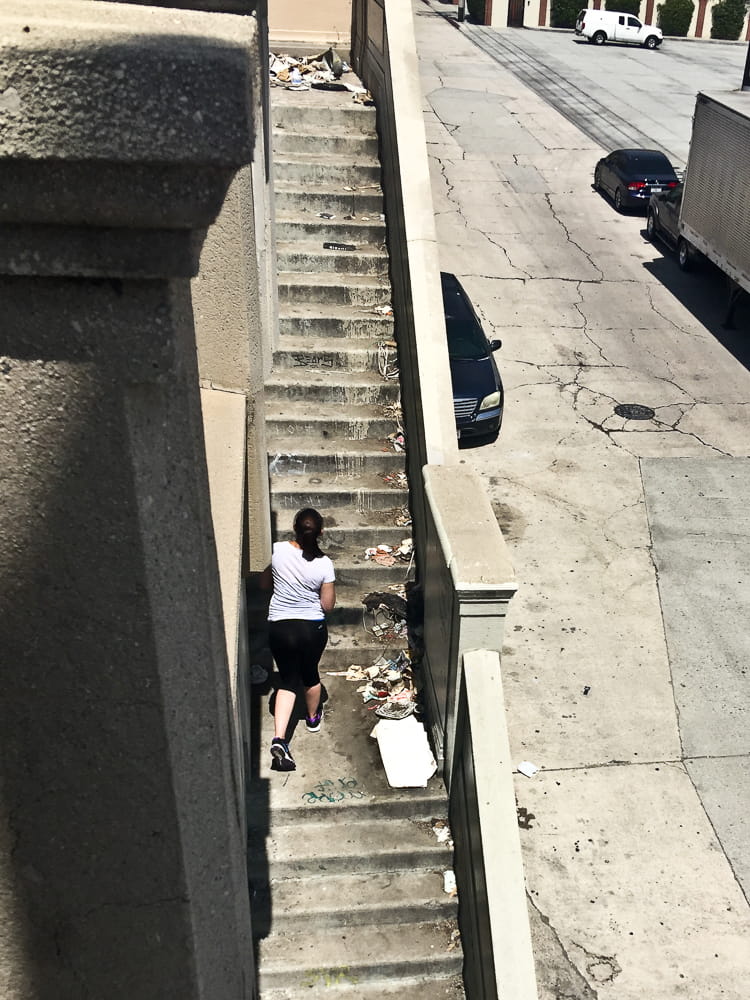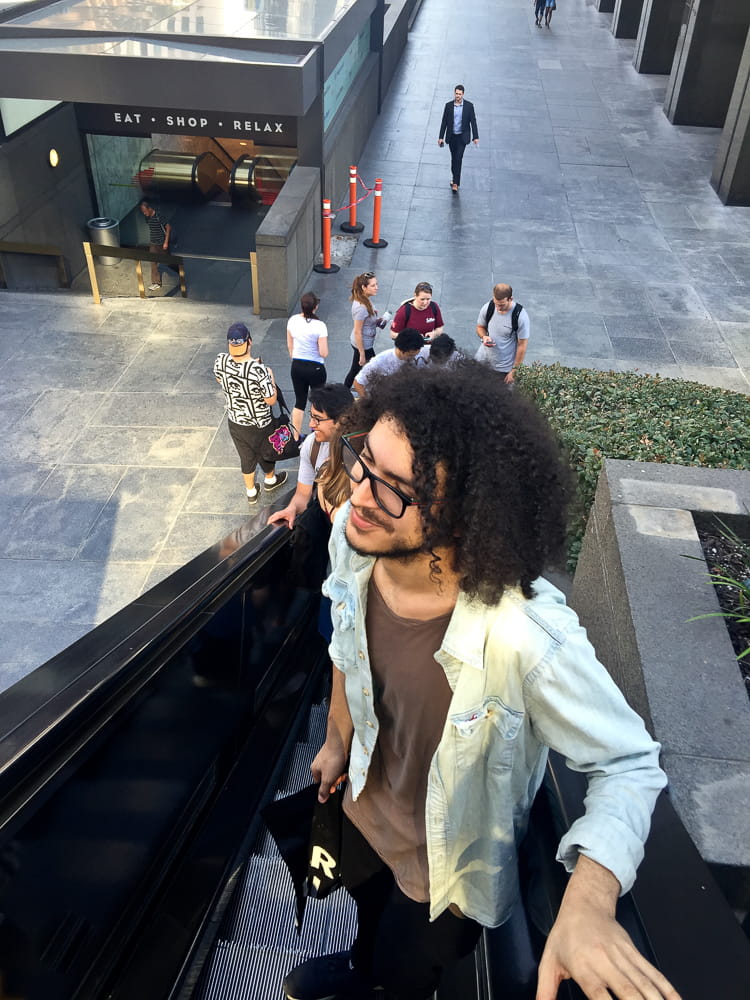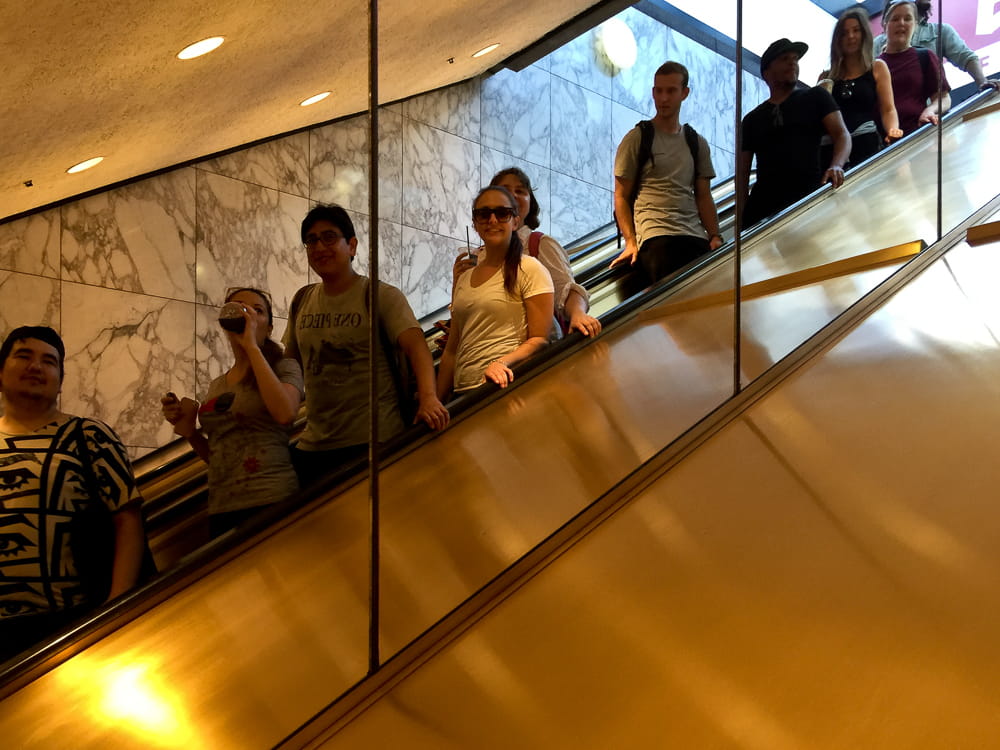Fieldwork LA 2016
Fieldwork LA is a grad and undergrad studio offered to Woodbury’s architecture students to bridge the analytical work of the core sequence with the synthetic work of the final year. The Summer 2016 rendition of Fieldwork LA was titled Through the Door on 4th & Hope, suggesting that through one of the hidden entrances to LA’s old subway tunnels, a different version of LA exists parallel by the studio’s discovery and fictionalization.
The studio’s primary goal was to establish an understanding of the complex relations between the current state of Bunker Hill, the erased history, and aspects found in LA-based film noir, which offered glimpses for understanding the social and spatial aspects of the past. The studio’s exploration operated mainly on drawings but questioned their conventional role as representation. Here, students worked their drawings into multi-dimensional objects to draw out the relationships above and generate new spatial conditions for the final design. Students visited a series of fieldwork locations in Los Angeles and researched historical materials to build an analytical foundation for their final projects. Several key field trips provided the basis for students’ analysis: Mt. Wilson Observatory’s CHARA Array*, Museum of Jurassic Technology (MJT)*, Boyle Heights & Heritage Square, and the Downtown Los Angeles Walk Tour**.
For the final project, the students funneled their semester-long research and exploration from their earlier assignments and field visits into a “walk museum” whose fragments spread across five sites in Bunker Hill.
Bunker Hill, as the overarching site, was chosen for its role as a prime example of the cycle from urban development to decay and ultimately to redevelopment, a pattern experienced by many American cities. But more crucially, its redevelopment was an abrupt and total erasure of its former identity. In 1955, the Los Angeles City Planning Department began a plan of extensive slum clearance marketed as the “removal of blight”. During the redevelopment, the hill was reduced to its current elevation, the Angel’s Flight was relocated, and the historic houses were demolished, except for a few relocated to Heritage Square but destroyed by arson later. Ironically, the slum was displaced without a real plan. Some moved into Chinatown and other lower-income neighborhoods, but some ended up in Skid Row. The spillover of Skid Row into the Financial District in recent years suggests a cautionary tale that conflicting socioeconomic undercurrents left behind by “leveling the ground” of Bunker Hill could never be entirely suppressed.
The studio featured a guest lecturer, Ben Ledbetter, a painter, architect, and professor who taught at Yale, Auburn, and Wesleyan. His built work spans highly conceptual and painterly, and his interest in Bunker Hill, especially through the lens of Film Noir and the “Combines” of Joseph Cornell, had a significant influence on this studio. LA-based film noir provided rich cultural and historical data, and its common theme, “transgression,” laid a fertile ground when discussing urban interventions that disrupt the established norm through imaginative architecture. The topic of transgression with a slightly different focus – personal ethics and psychology – has been a theme in Yeh Design Lab’s other work. Please see the introduction for “Root” under the Wearable Series.
* See Fieldwork LA 2014.
** The Downtown LA Walk Tour started from the east side of the 4th Street bridge, through Artist District and Skid Row, to the World Trade Center, Grand Avenue, and arrived at the Bona Ventrue Hotel in Bunker Hill/Financial District.
Special thanks to MTJ founder David Wilson for the extended tour at MJT and Georgia State University for the very rare opportunity to enter the CHARA Array and the Beam Synthesis Facility.
Work by Students:
Melinda Khader, Miguel Andrade, Gilmar Campos, Eduardo Carballo, Mario Espinoza, Fernando Garcia, Gomez Steve, Salvador Juarez, Ashley Munselle, Marlon Nerio, Annie Nguyen, Quang Nguyen, Jose Ochoa, Miguel Potrero, Johana E. Rodriguez, Sergey Saakyan, Daigo Shimono, Hector Solis, and Arutyun Sumbatyan.


